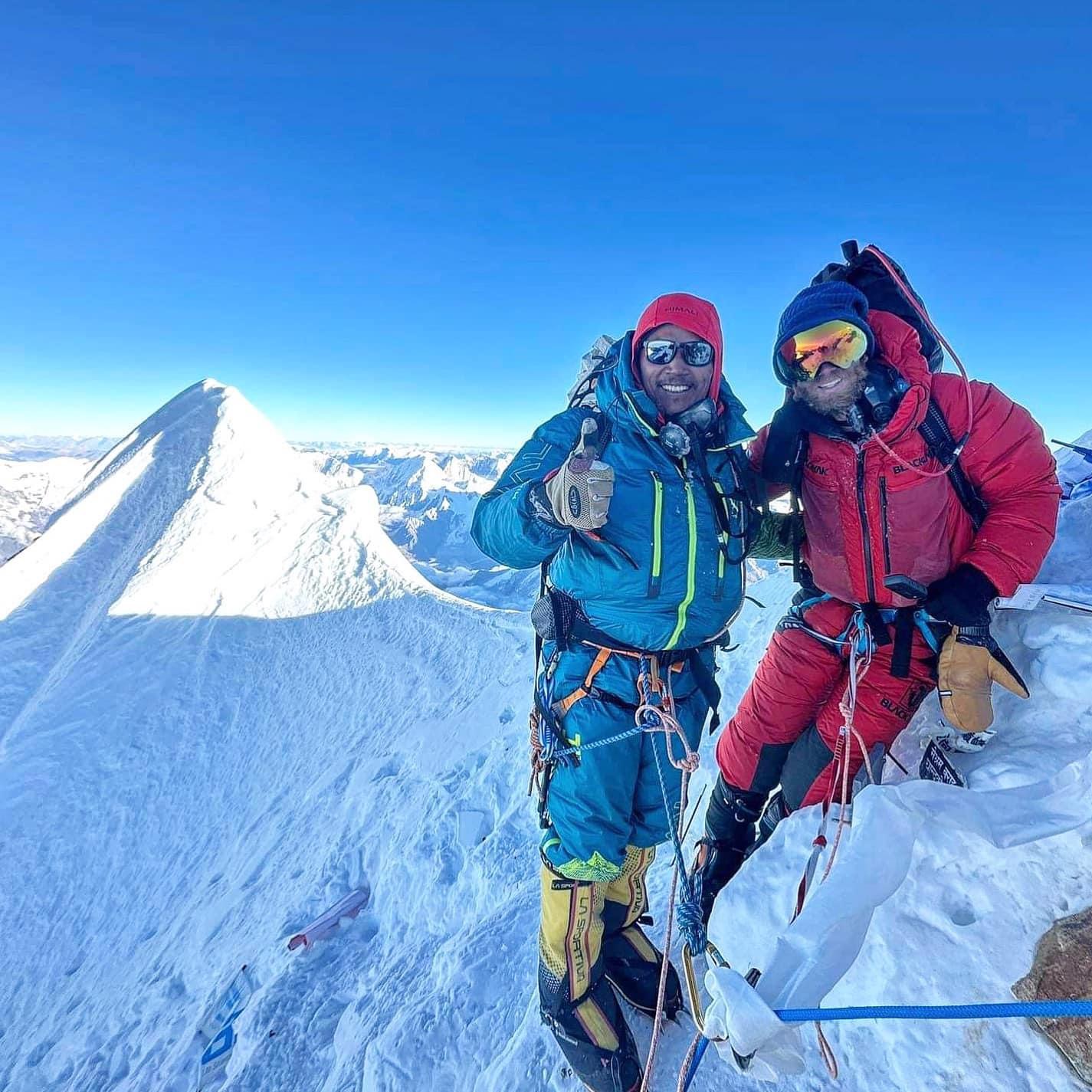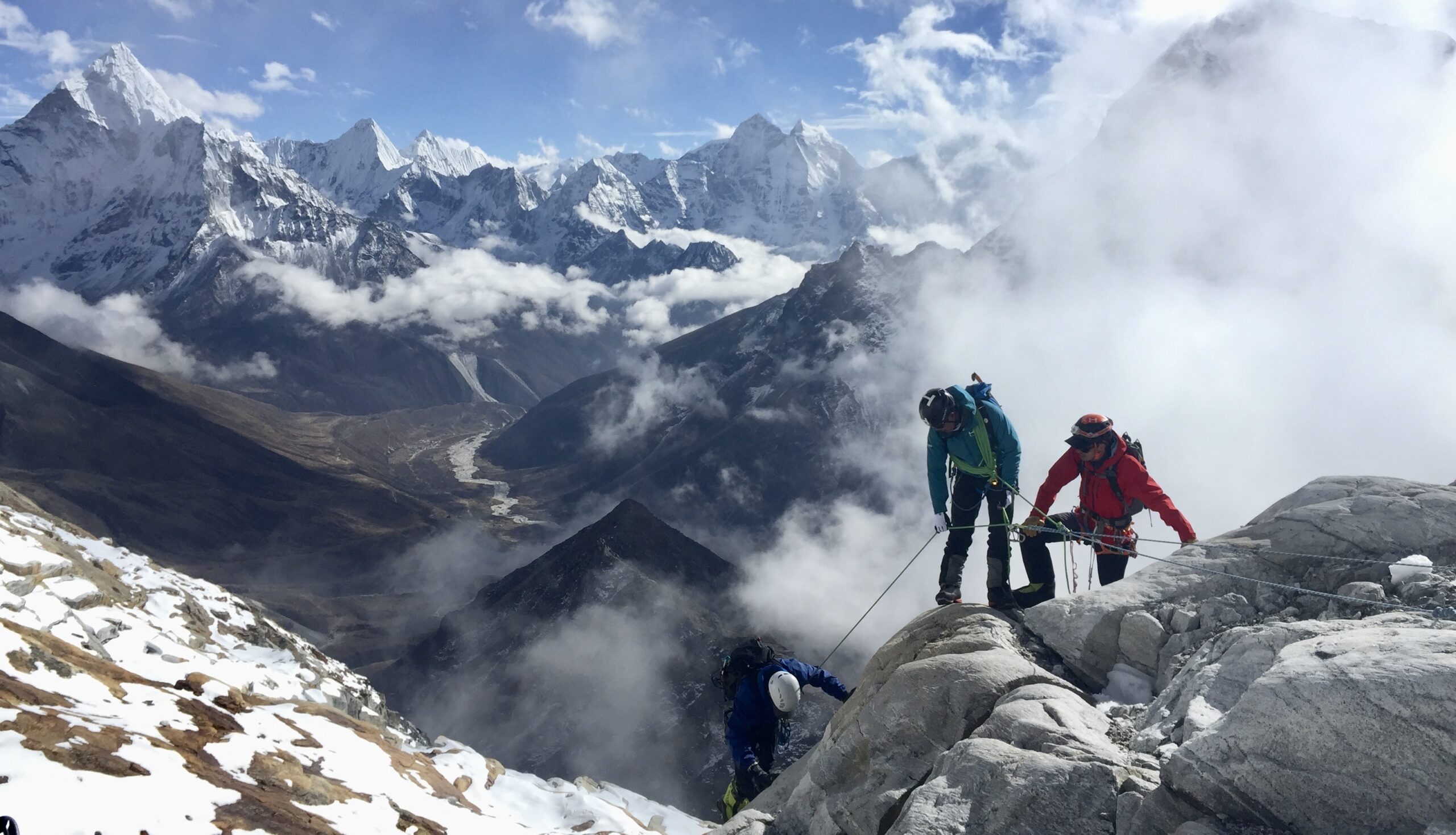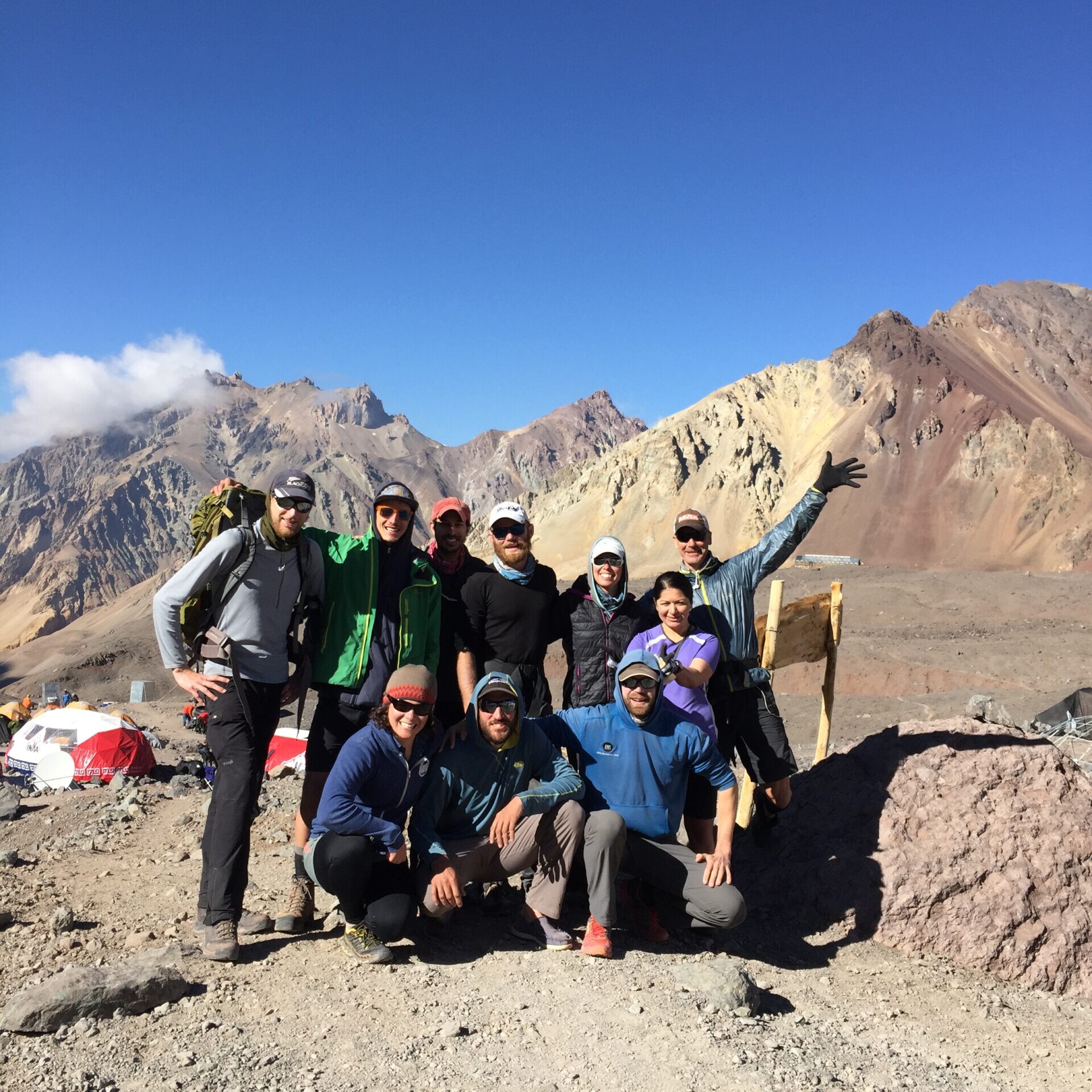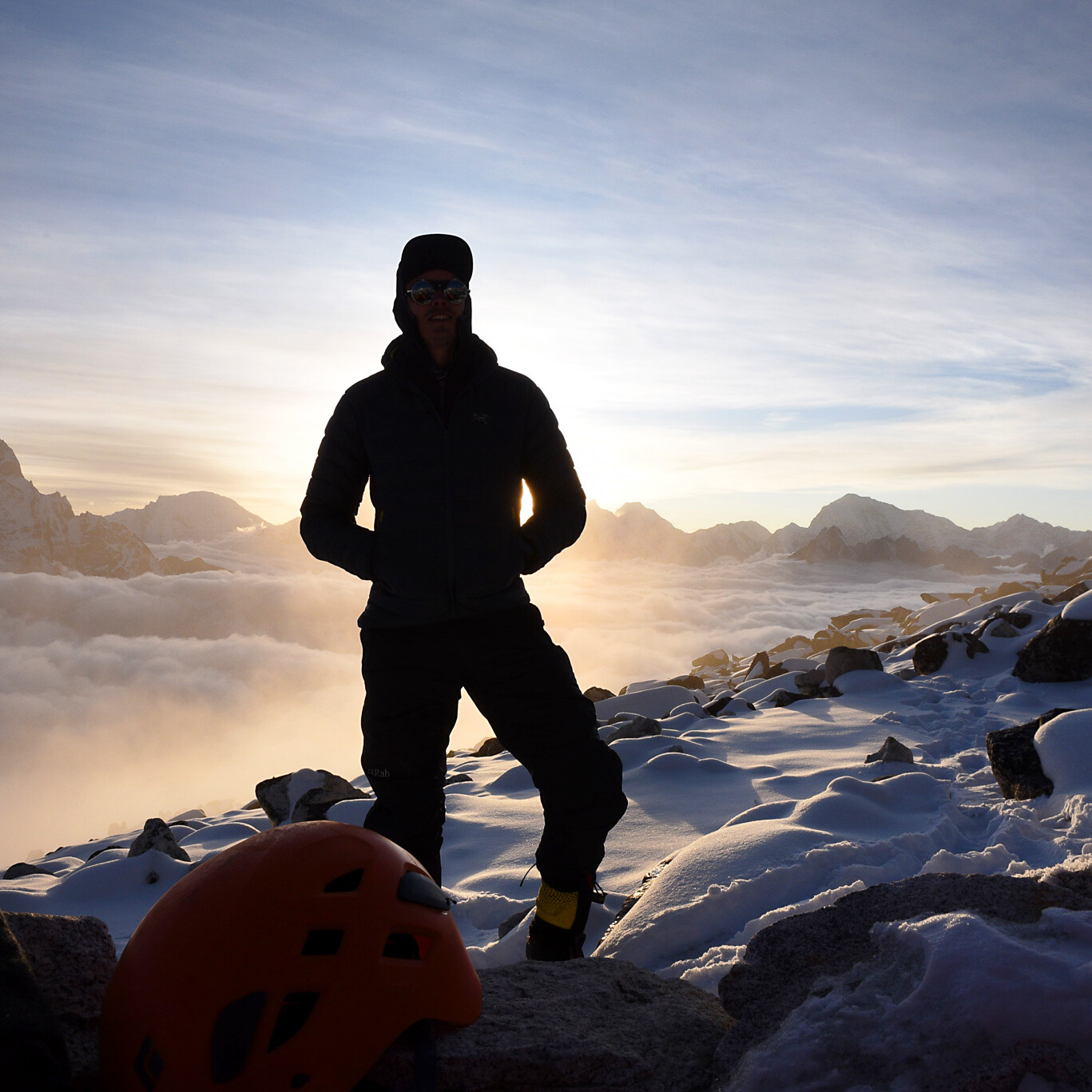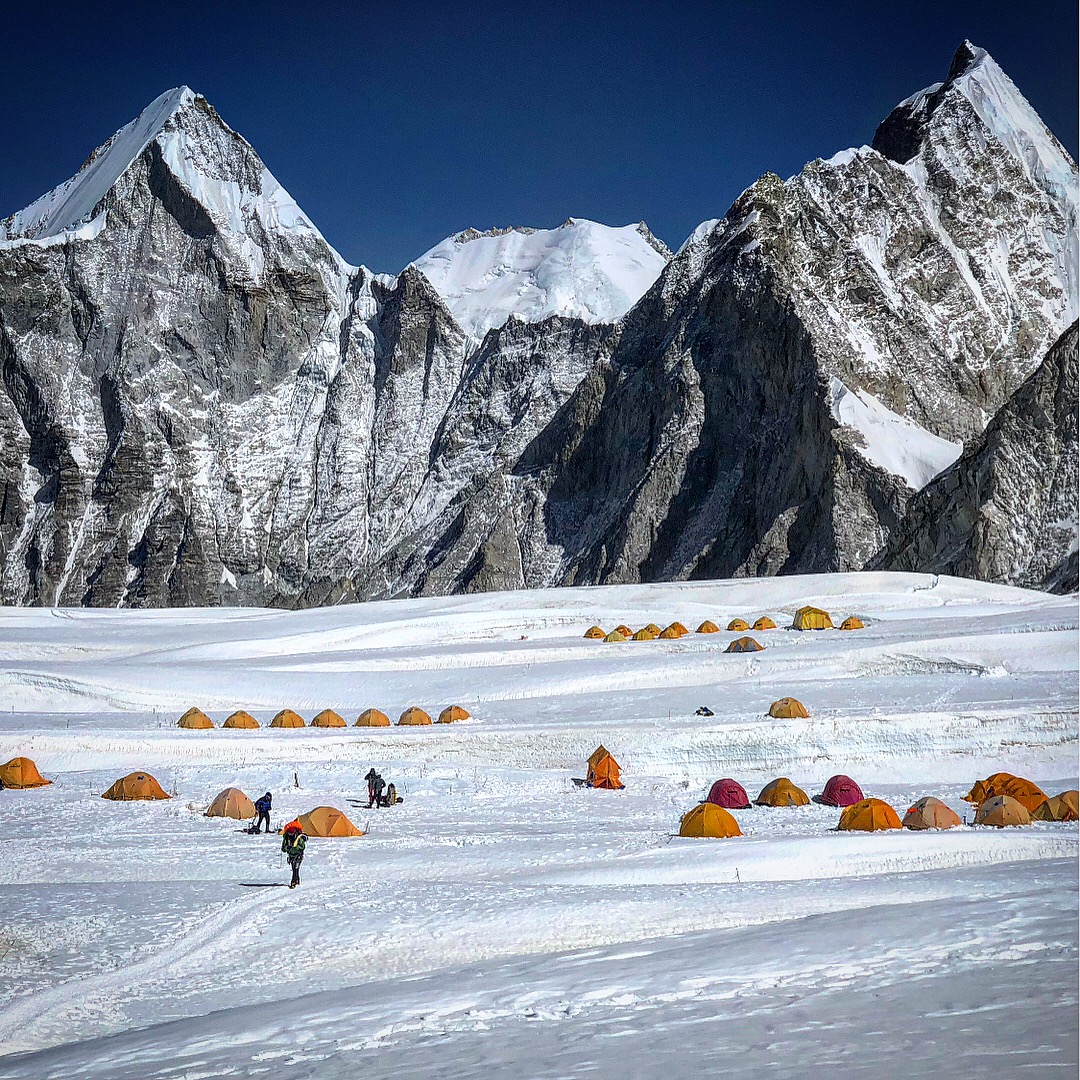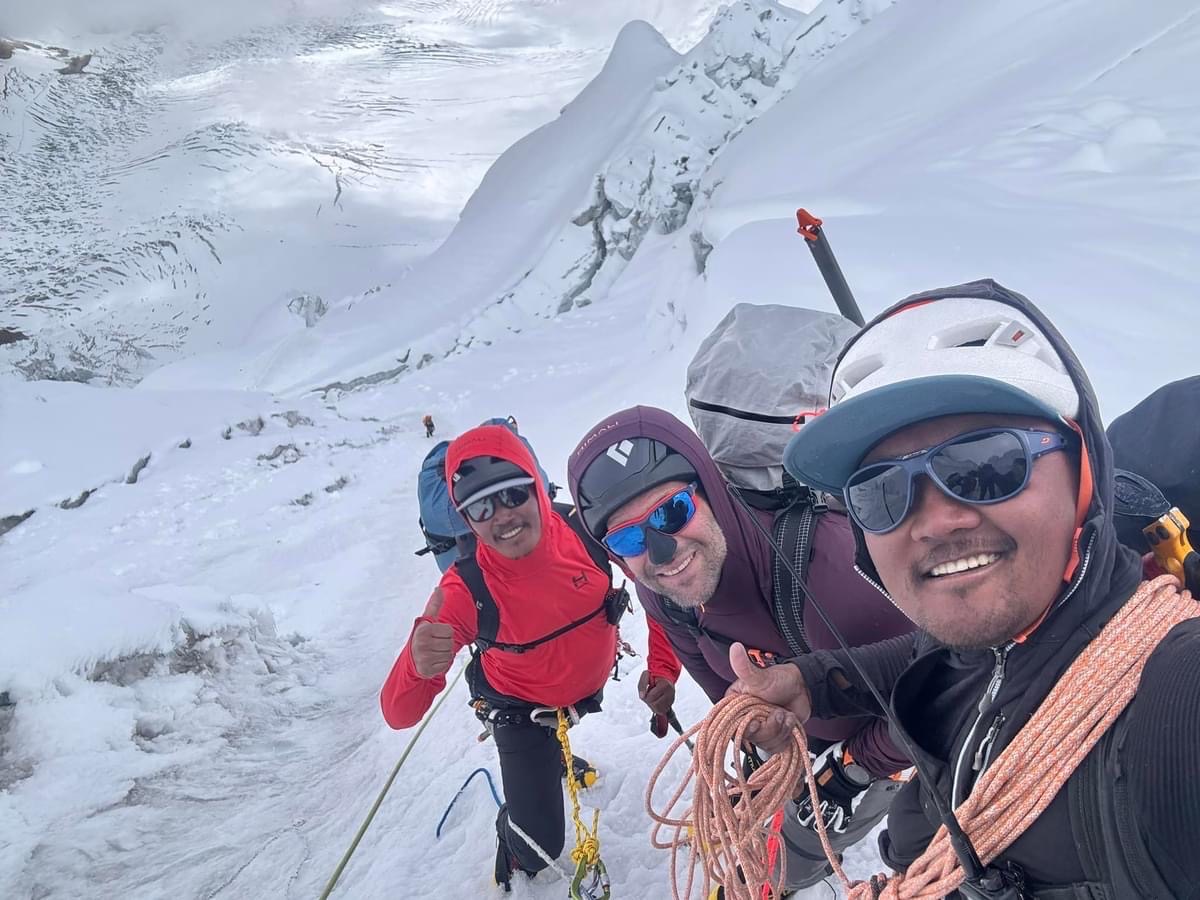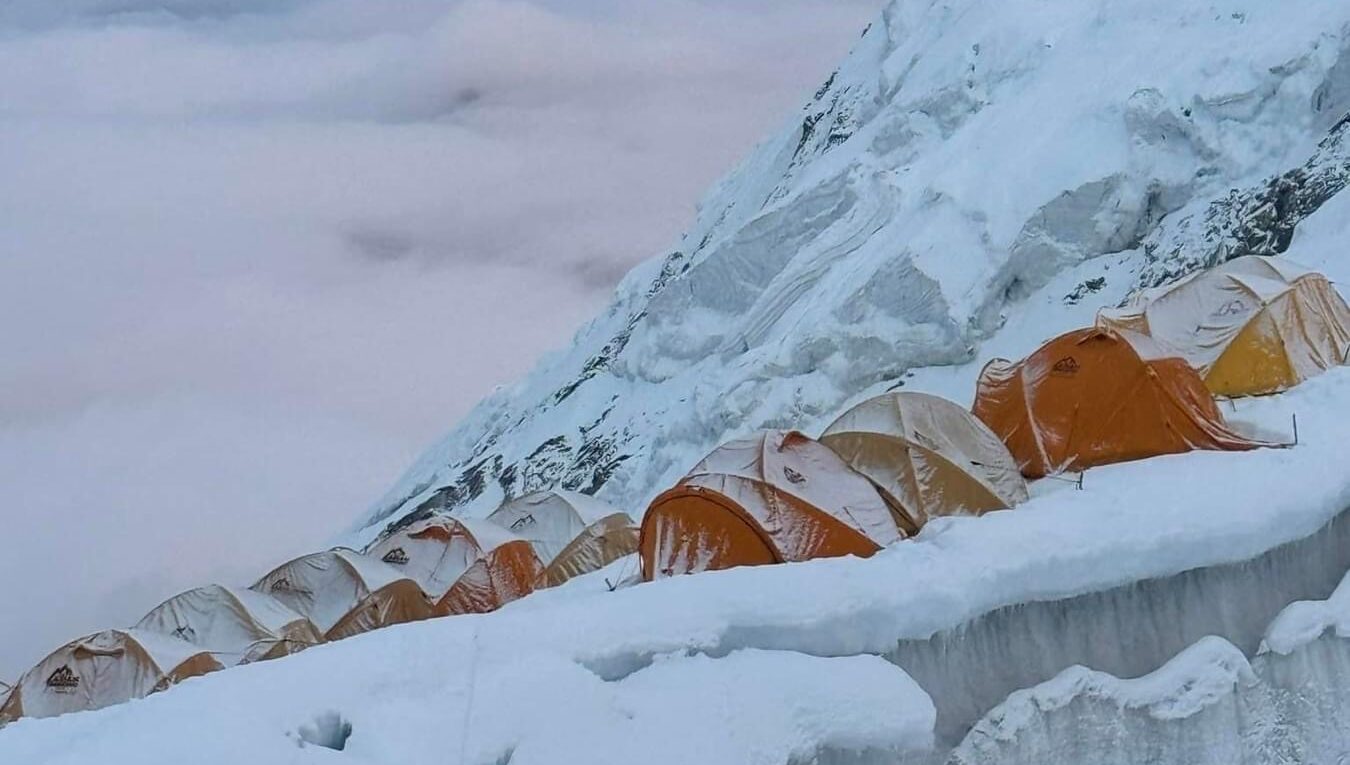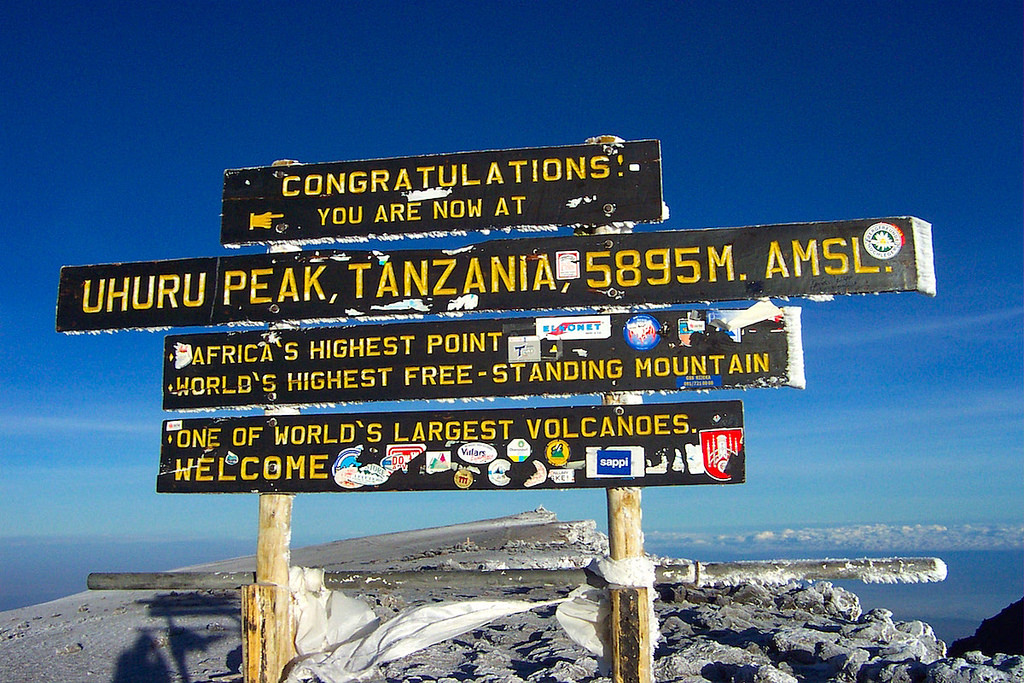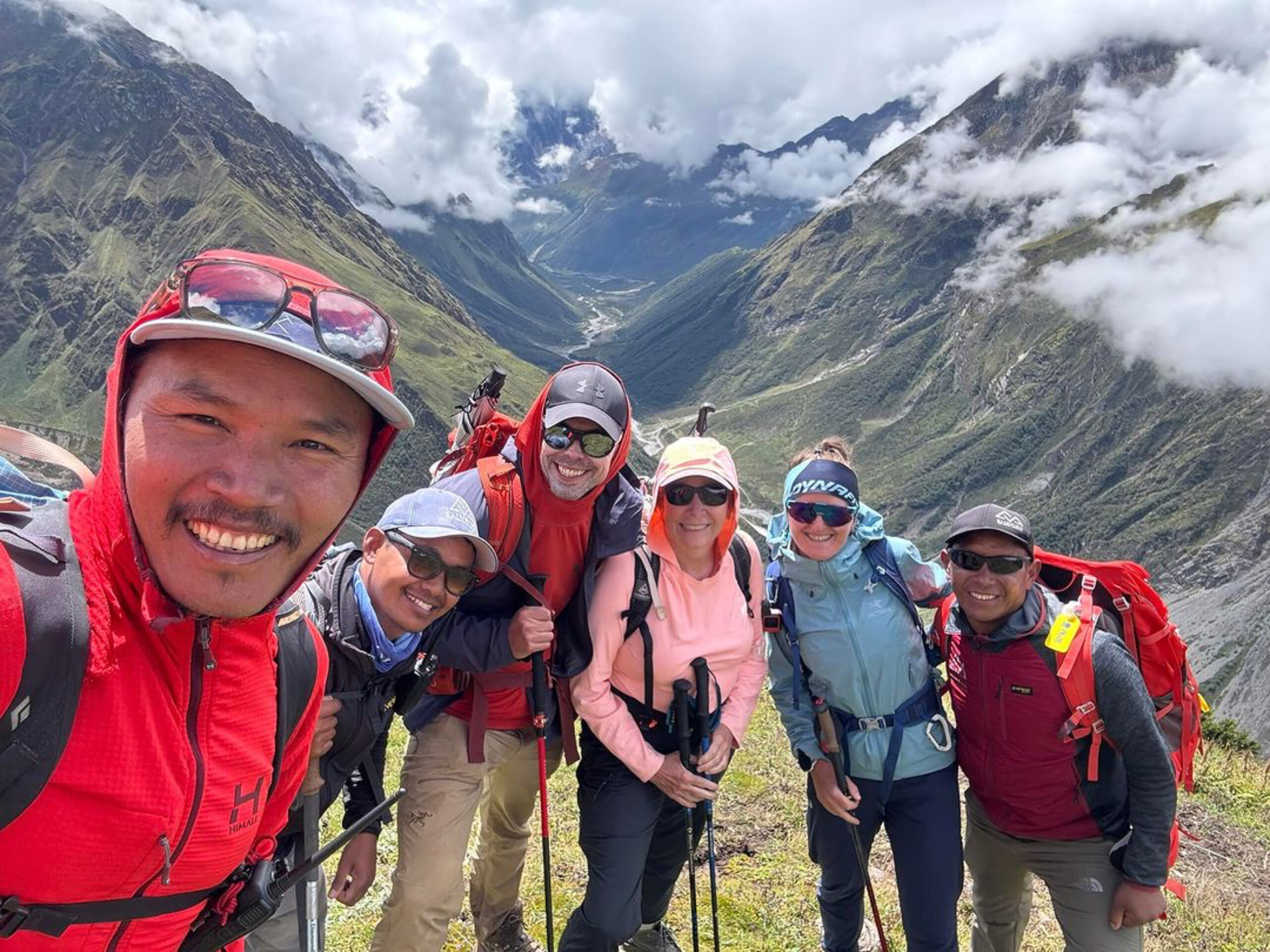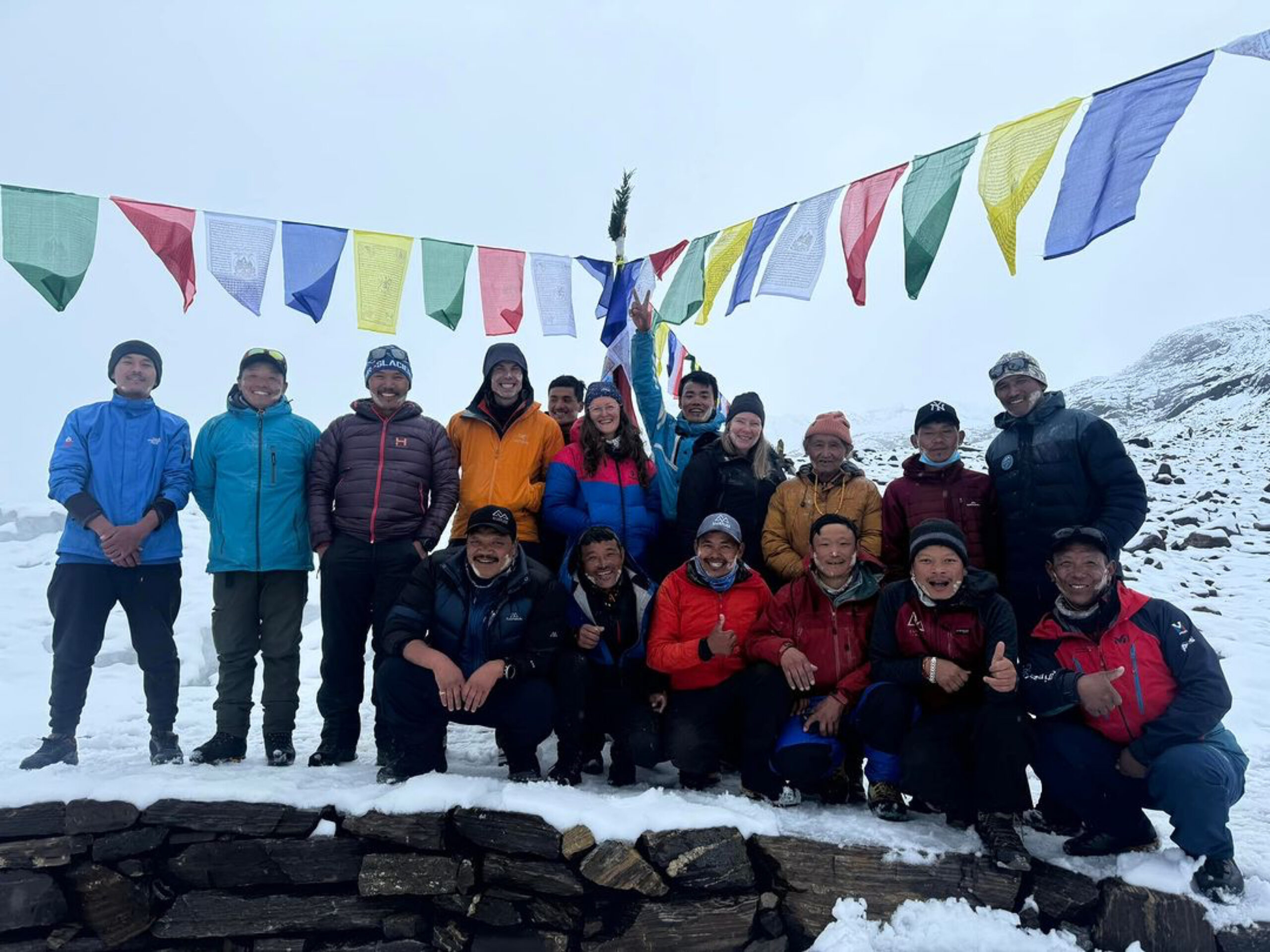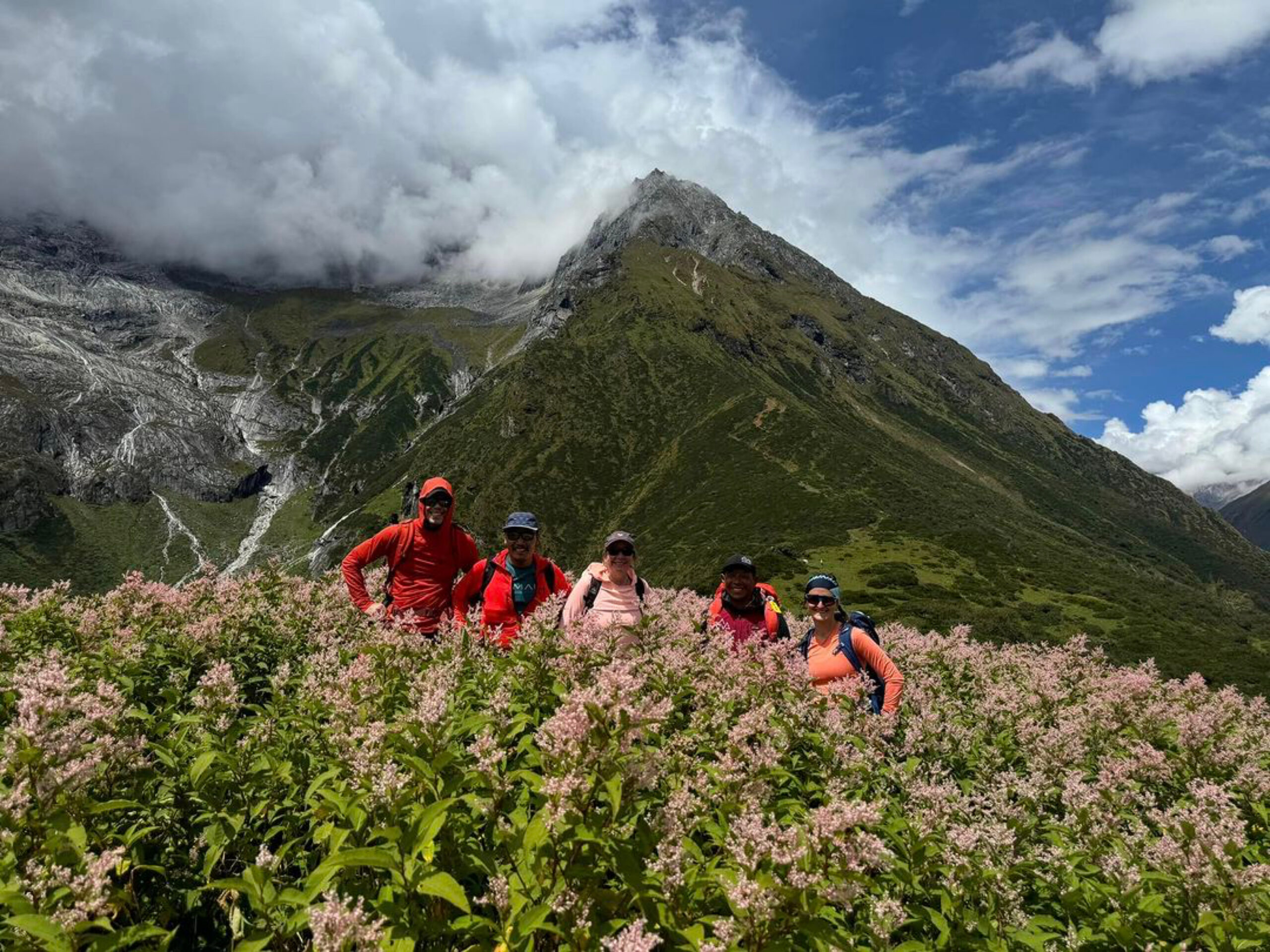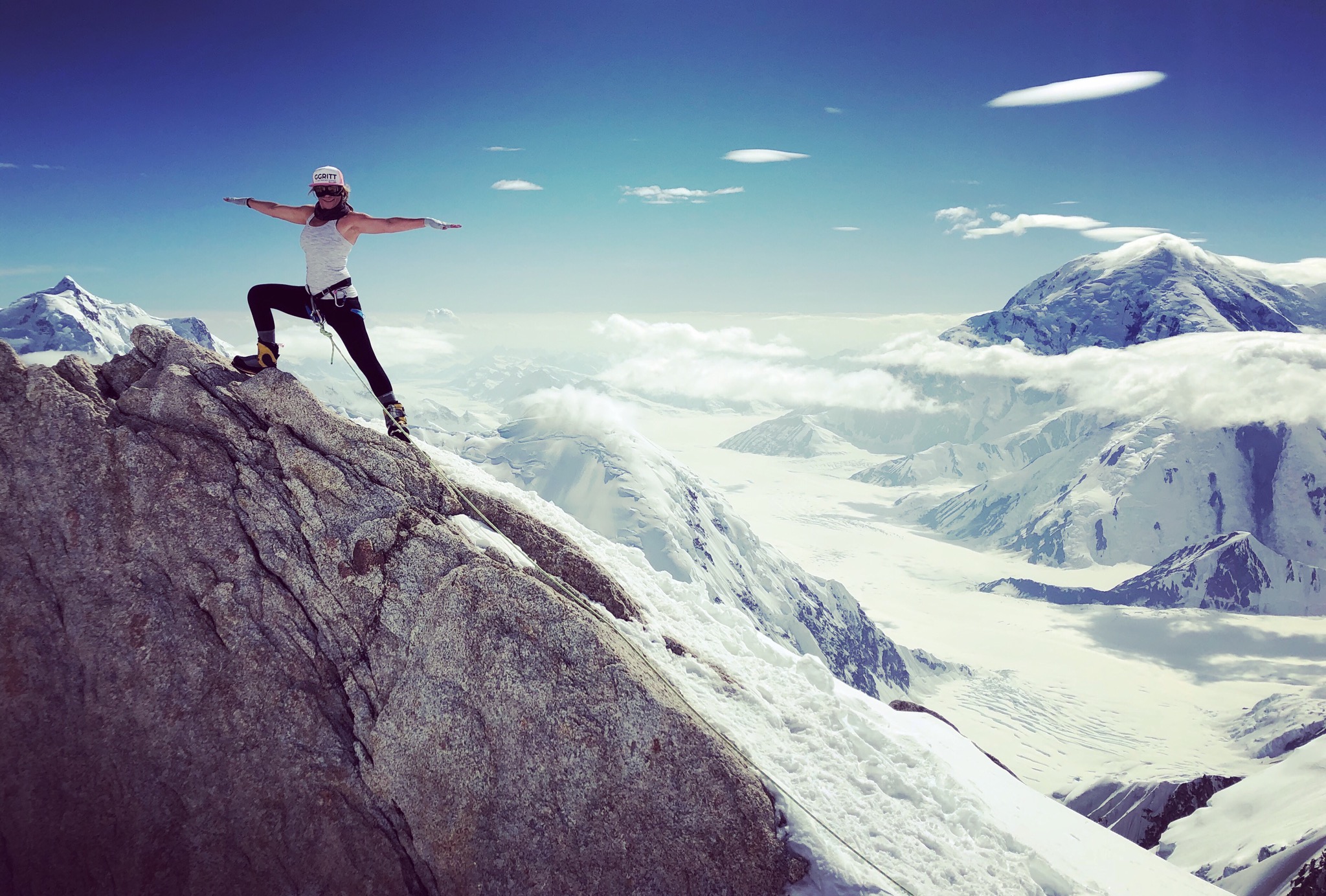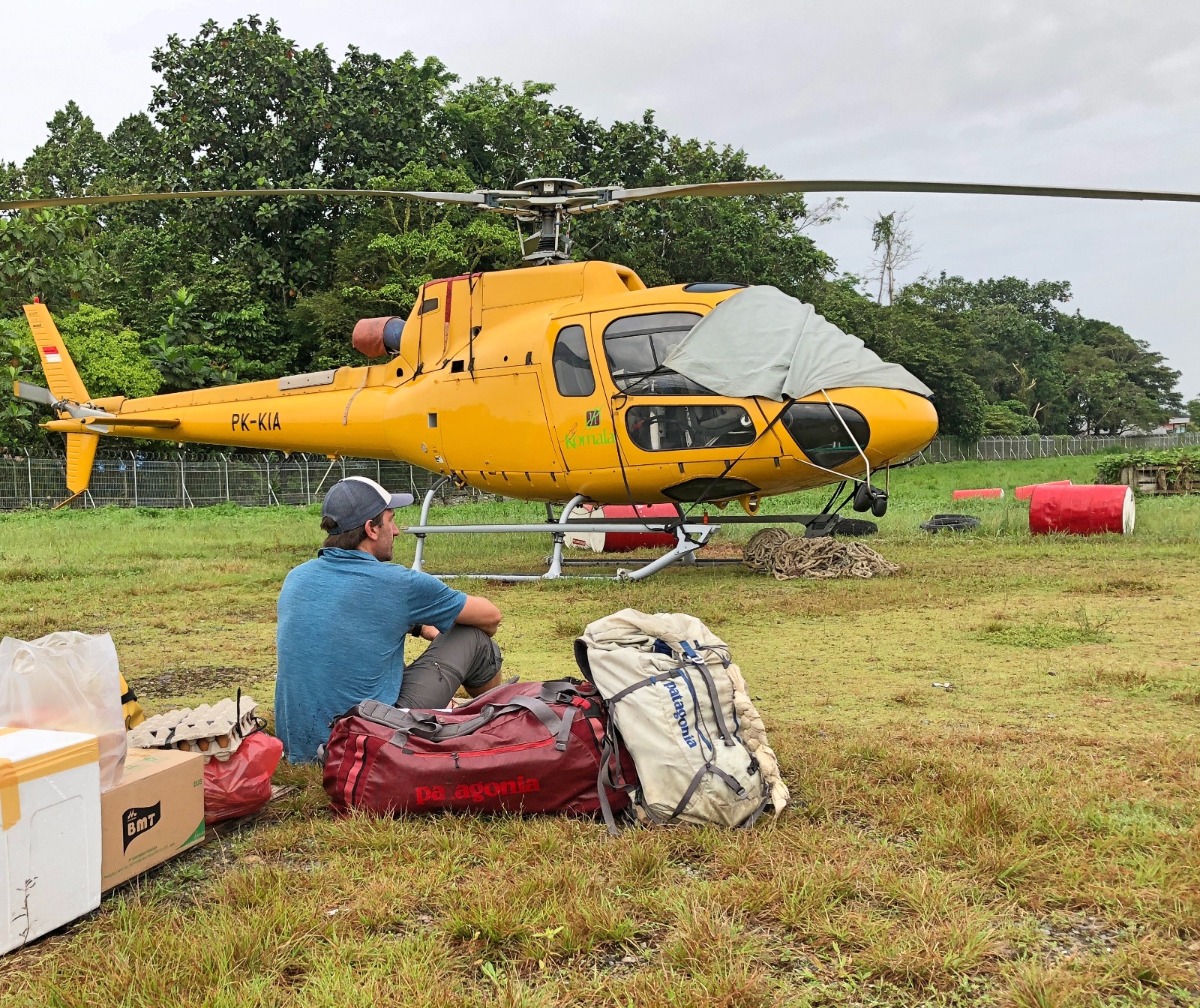Successful Summits on Manaslu
Good news from Nepal! Our Manaslu team hit the true summit today, September 25th, at 8:36 am local time. The team is already safely back at Camp 2 where they will spend the night before dropping back to Base Camp tomorrow morning.
Congratulations to the following climbers and guides:
- Ms. Aga Olkowicz
- Mr. Adam Sylvester
- Mr. Pasang Tendi (Little Tendi)
- Mr. Dawa Jangbu
- Mr. Thunang Lhomi
- Mr. Chheden Bhote
- Mr. Pasang Bhote
- Mr. Dawa Sherpa
- Mr. Nuru Sherpa
And for those wondering what we mean by the true summit of Manaslu, here is a little background on the simmering debate that concluded in 2021. For years, climbers and guides argued about what constituted the true summit of Manaslu. Was it the traditional turnaround point, which was marked with a Nepali flag and Tibetan prayer flags but stood about 20 to 25 feet below the ridgeline? Or should climbers and guides make their way past that former turnaround point and climb up the ridge to reach the true top of Manaslu? After some definitive drone footage of the summit, which clearly showed the disparity between the true summit and the traditional turnaround point, it was decided that Manaslu’s turnaround point would extend to the ridge.
Here are a few photos from our archive of Manaslu and its true summit.
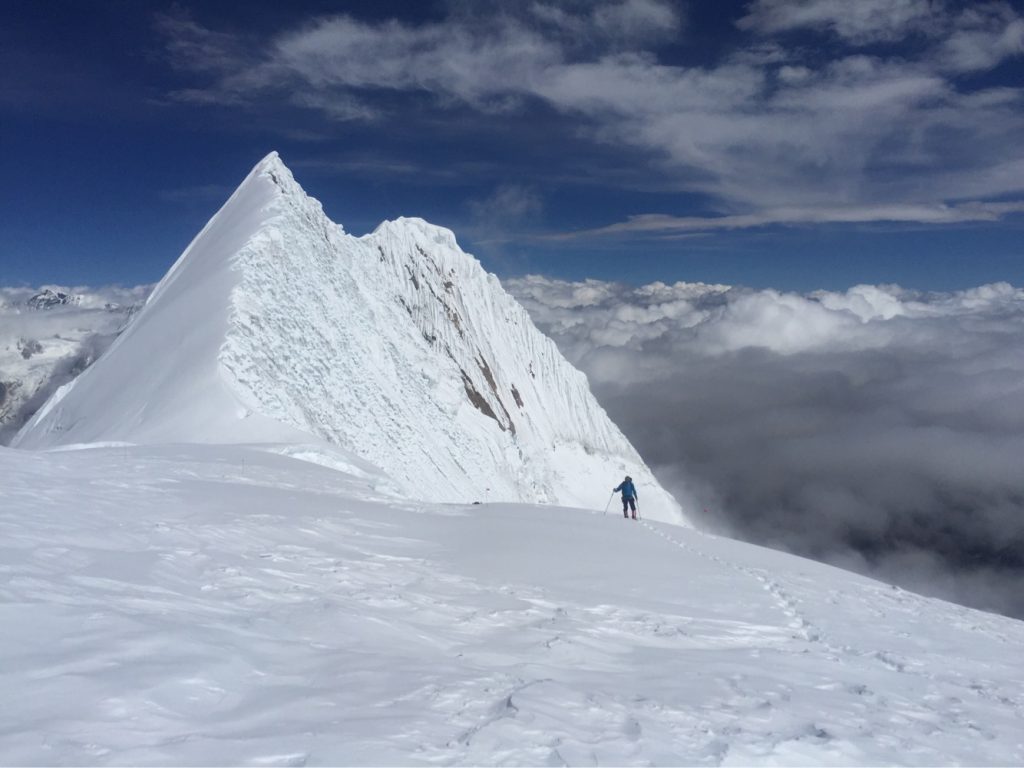
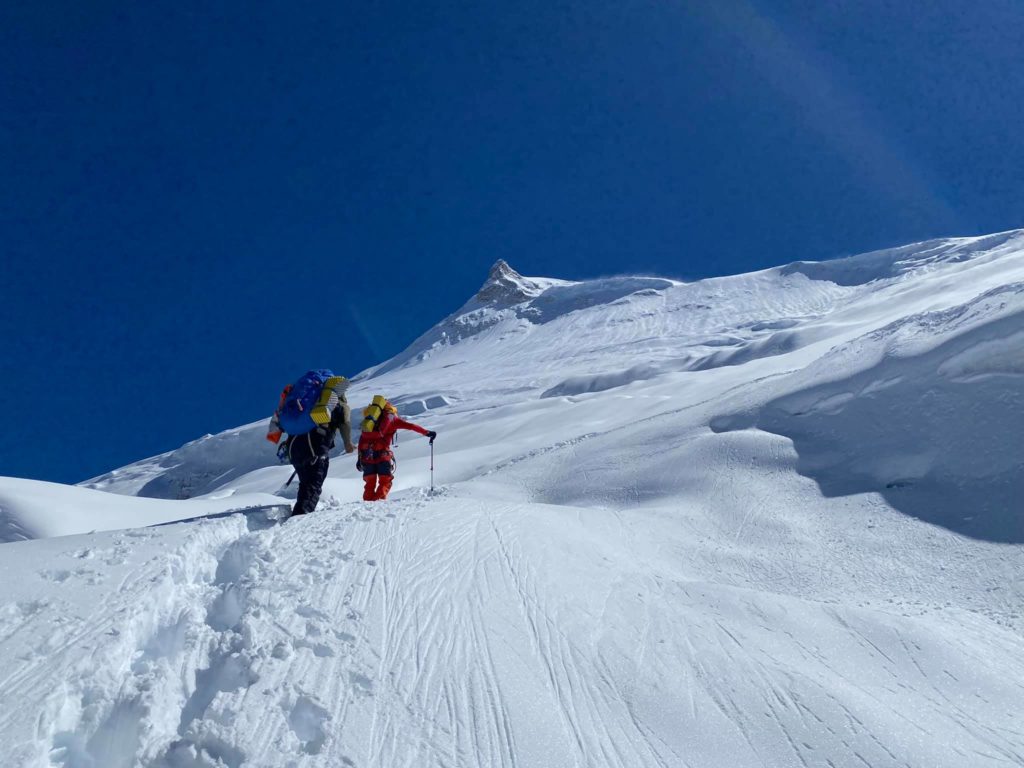
Understanding Acclimatization
Acclimatization and High-Altitude Resources
At Climbing the Seven Summits, our priorities are always safety and success, in that order. That’s exactly why acclimatization schedules are one of the most important pieces of our logistical planning for all of our expeditions. Sure, you’d expect a generous acclimatization schedule if you’re summiting Aconcagua or Mount Everest, but we also employ these same principles on lower objectives like Kilimanjaro and our Everest Base Camp Trek—setting ourselves apart from operators who may rush you up the mountain.
Our resources below will deepen your understanding of acclimatization and high-altitude environments. If you have any lingering questions about acclimatization, you’re welcome to send our team a note at info@climbingthesevensummits.com.
From our Blog
Nothing found.
Webinar Archives
Mountaineering 101: Understanding Acclimatization and High-Altitude
Let’s dive into the science of acclimatization and high altitude—from how it impacts your physiology to what you can do to prepare and how to avoid, recognize, and treat altitude sicknesses. This webinar and Q&A session is hosted by three top industry experts: Dr. Brenton Systermans, CTSS guide and expedition doctor; Chad Althiser from Hypoxico Altitude Training Systems; and Nick Hart from The Altitude Centre in London.
Expert Tips
Dr. Brent from CTSS on the importance of slow acclimatization schedules during an expedition.
Chad Althiser from Hypoxico on the principle of climbing high and sleeping low.
Nick Hart from the Altitude Centre on the importance of training before your expedition.
Dr. Brent from CTSS on what happens physiologically during acclimatization.
Chad Althiser from Hypoxico shares a Speed Ascent case study from an Everest summiteer.
Nick Hart from the Altitude Centre on Speed Ascent using Hypoxico Training Systems.
Speed Ascents
Our Speed Ascent programs offer considerably shorter itineraries than our standard trips. They take advantage of pre-acclimatization technology in the comfort of your own home before you depart. Click on each image below to learn about our climbs that offer a Speed Ascent option.
Ready to Progress?
Consider these expeditions
Manaslu Summit Bid is Underway
The weather window has arrived, and our team on Manaslu is making moves toward the summit! Today, they are heading to Camp 1 and will continue to capitalize on the good weather. We will update our blog from the upper camps as we hear more from our Senior Guide, Tendi Sherpa.
Typically, once our teams are making the summit push, they will move to a new camp each day. This means we anticipate the team moving to Camp 2 tomorrow (Tuesday, September 24th), Camp 3 on Wednesday, Camp 4 on Thursday, and their summit bid on Friday, September 27th. After their summit bid, the team will return to Camp 2 for a night before returning to the comforts of Base Camp.
We wish the entire team the best of luck! Here we go!
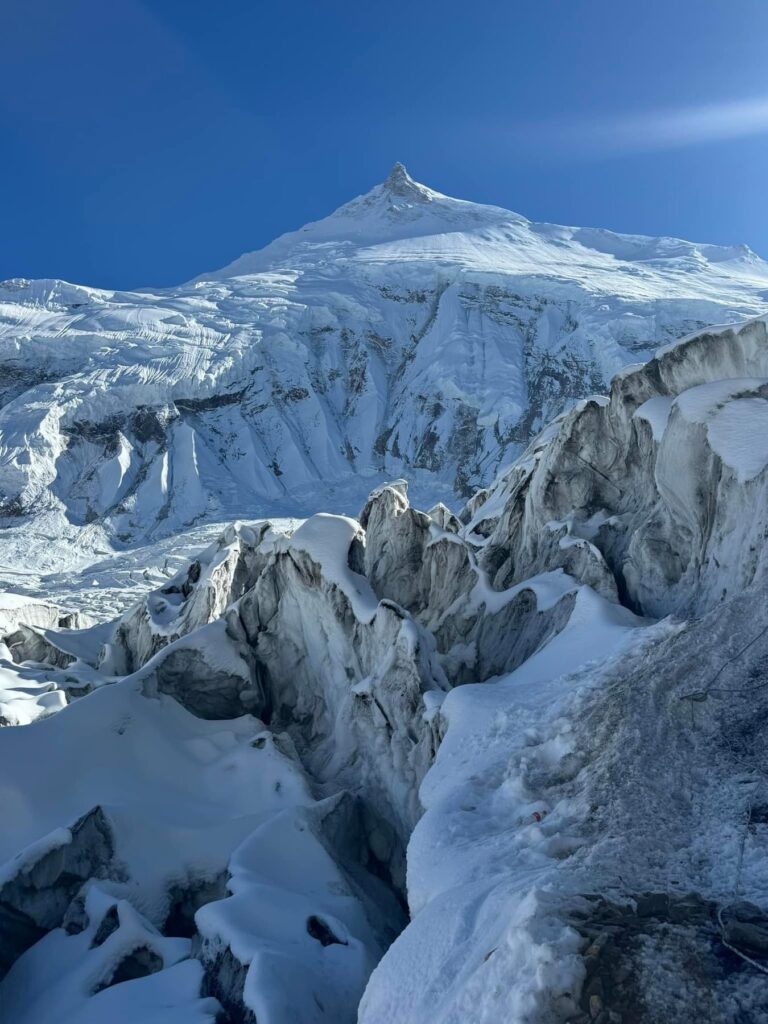 Views from the upper mountain on Manaslu. We are hoping for continued bluebird days! (Photo: Tendi Sherpa)
Views from the upper mountain on Manaslu. We are hoping for continued bluebird days! (Photo: Tendi Sherpa)
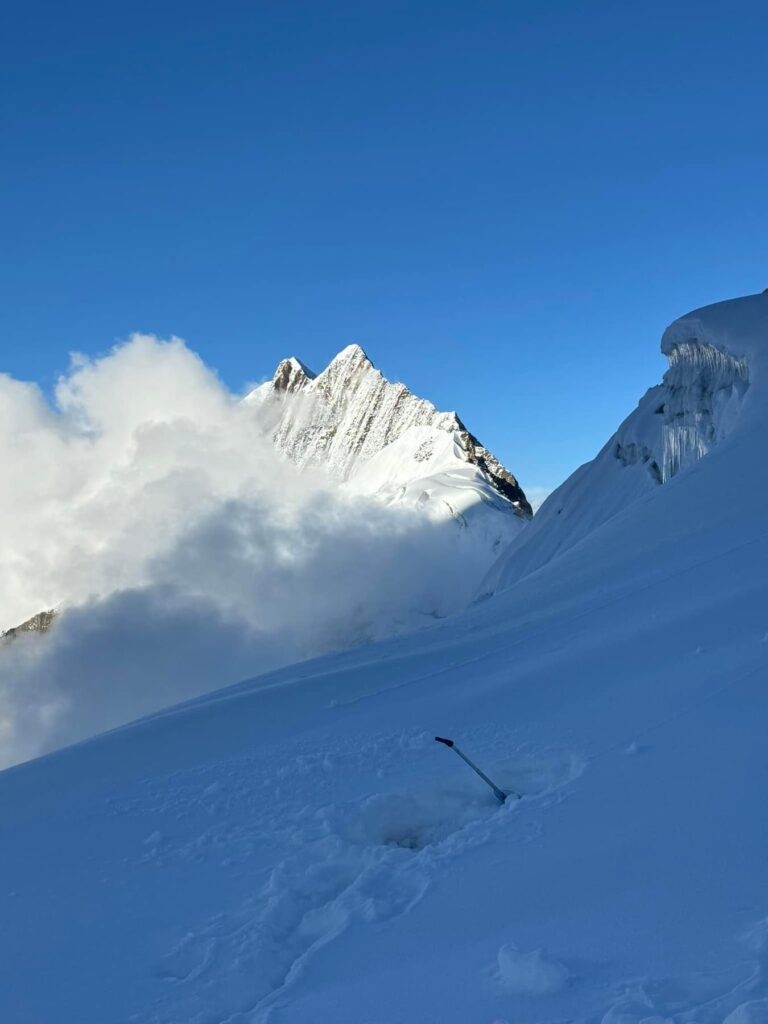 Skills training and snow assessments during the acclimatization rotations on Manaslu. (Photo: Tendi Sherpa)
Skills training and snow assessments during the acclimatization rotations on Manaslu. (Photo: Tendi Sherpa)
Successful Rotations to Manaslu's High Camps
It was a busy weekend for our team on Manaslu. An update from Senior Guide Tendi Sherpa came in yesterday after the team's successful and productive rotation to Manaslu's high camps. The team spent three nights above base camp, including one night at Camp One and two nights at Camp Two, with a quick acclimatization tag of Camp Three during their final rotation.
Now that they are back at base camp, the focus is on resting, hydrating, and fueling to prepare for their summit bid. For Tendi and the team, all eyes are now on the weather forecast so they can identify the best window for their climb. As always, the team will only push for the summit when it is safe, harkening in a quick reminder that the mountain grants us passage, never the other way around.
We will continue to keep you posted on their progress and schedule.
Photos from Tendi Sherpa
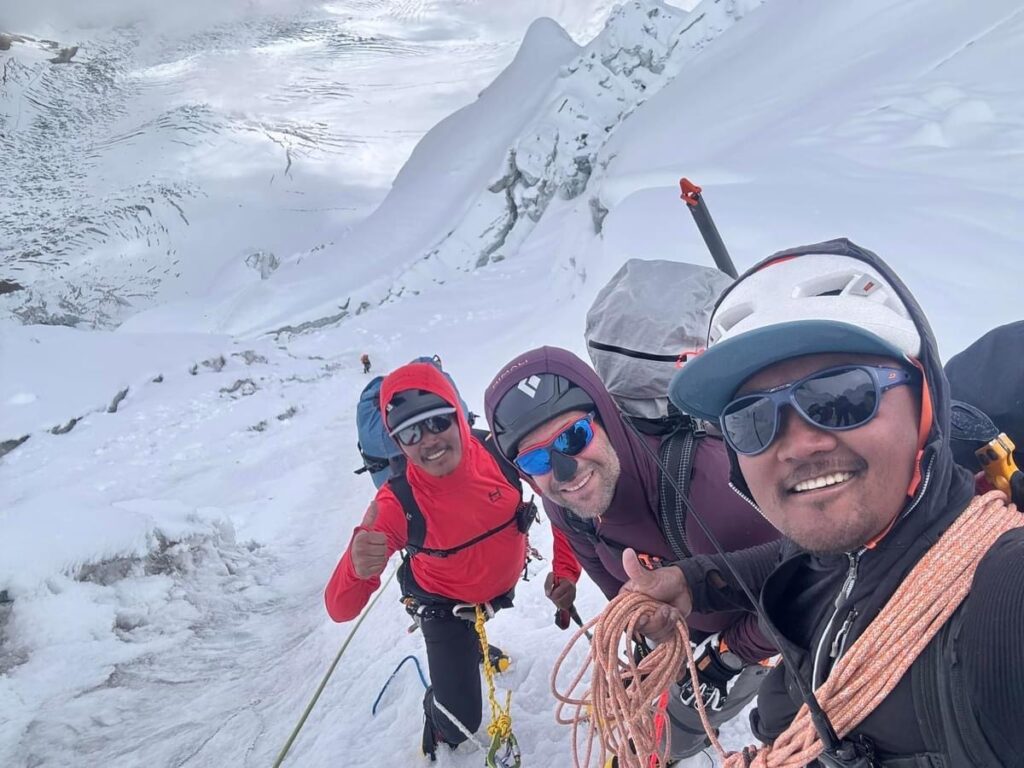 Roped up and ready to make a summit bid on Manaslu!
Roped up and ready to make a summit bid on Manaslu!
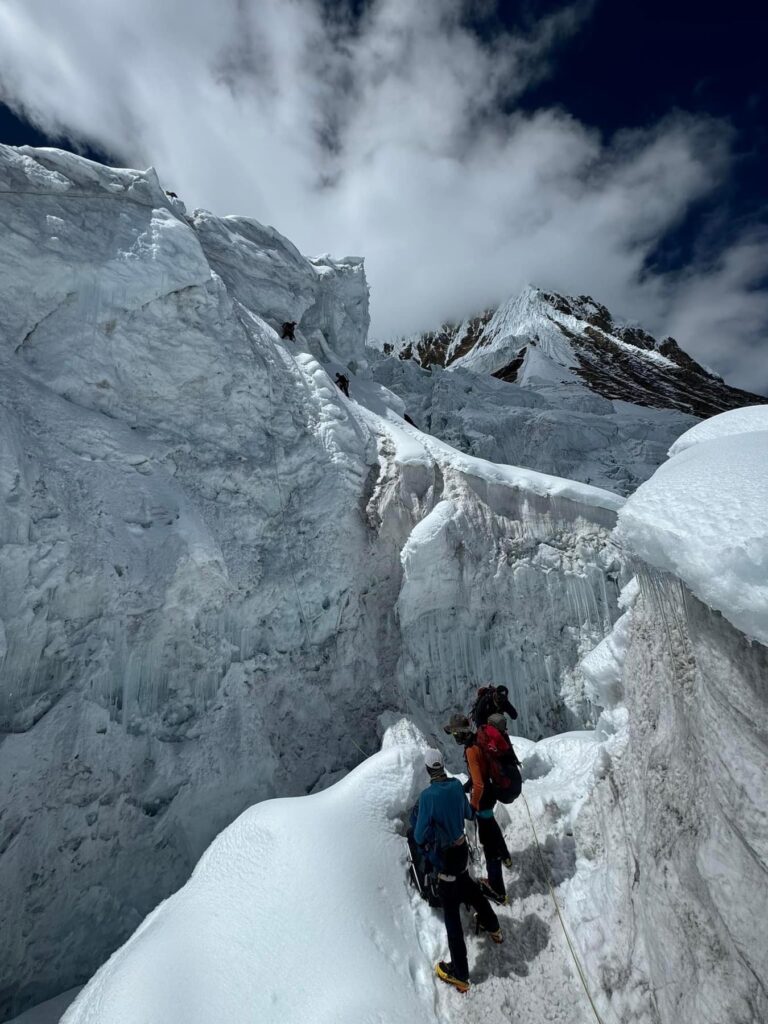 Careful assessments are needed when navigating the glaciated terrain on Manaslu.
Careful assessments are needed when navigating the glaciated terrain on Manaslu.
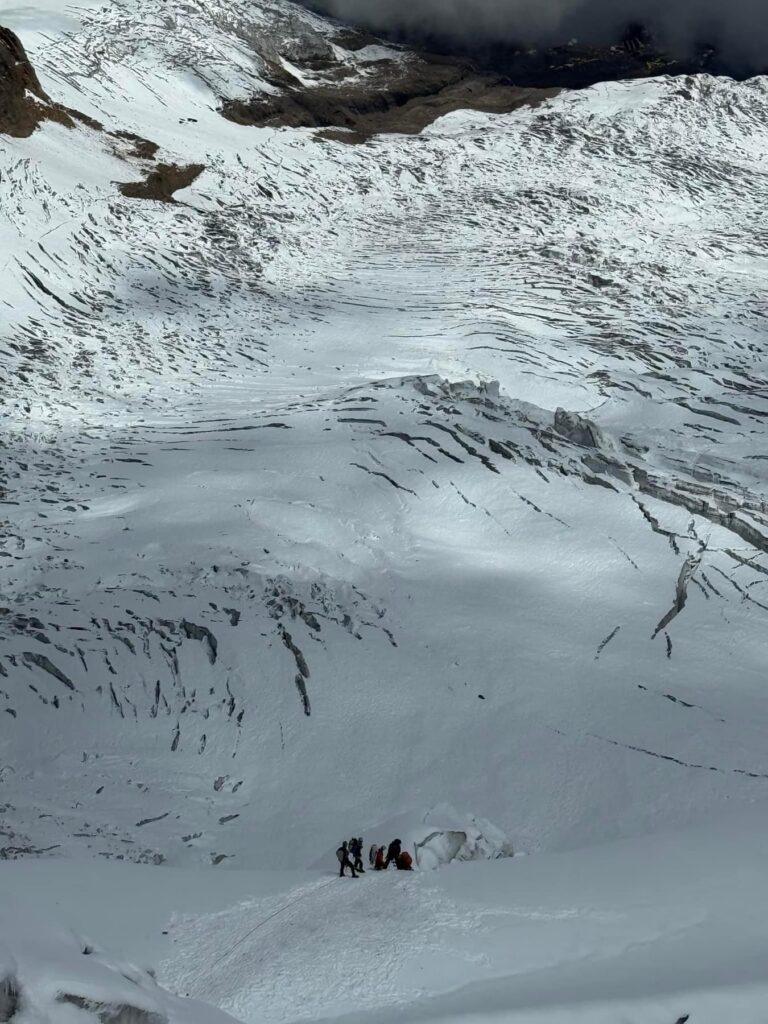 Team Manaslu, prepping and preparing for their summit push!
Team Manaslu, prepping and preparing for their summit push!
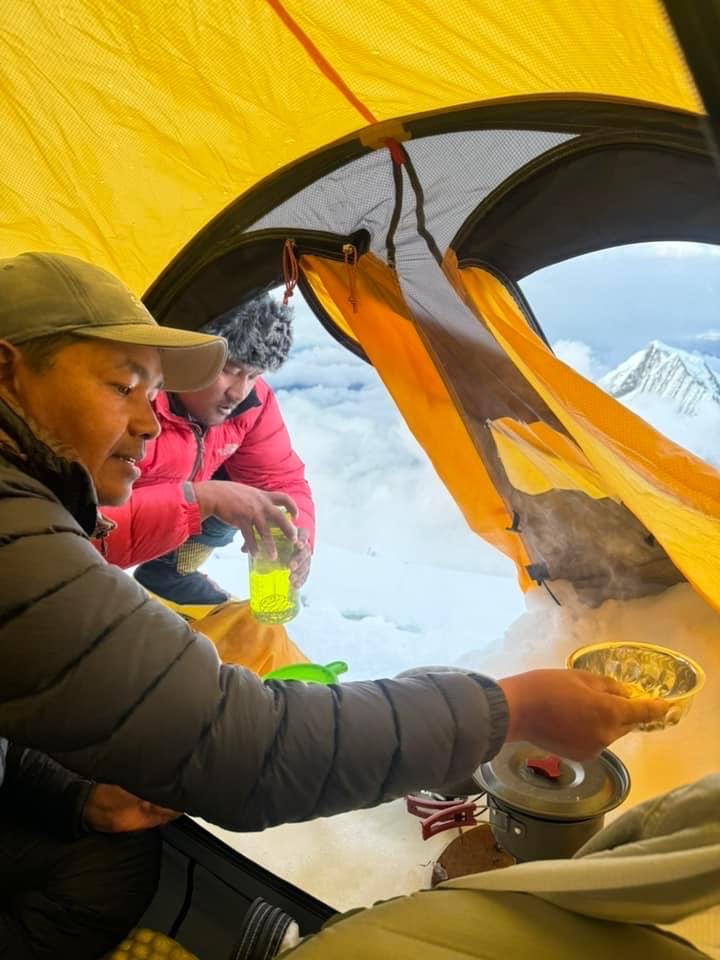 Keeping our climbers happy and healthy with good food and proper nutrition is essential to all of our programs.
Keeping our climbers happy and healthy with good food and proper nutrition is essential to all of our programs.
Kilimanjaro: Why Climb with an Expedition Company?
Kilimanjaro: Why Climb with an Expedition Company?
When planning a trek to the Roof of Africa, we don’t doubt that you’ll do your homework comparing routes, prices, operators, and more. If you’ve been digging, it’s more than likely that you’ve noticed a few differences in our Kilimanjaro expeditions compared to others.
So, how do we choose to set ourselves apart from the rest? We are proud to be a true mountaineering guide service rather than simply a trek operator. With a name like Climbing the Seven Summits, it shouldn’t be a surprise that we lead expeditions all over the world. From the summit of Everest to the top of Antarctica, Aconcagua to Denali, our mission is to deploy the best guides and logistics in the world for your safety and success in the high mountains. In addition, we take pride in having a different approach and philosophy when compared to most travel companies. The quality of our hand-picked, global guide staff, our approach to high altitude illness, our acclimatization schedules, our Marginal Gains Philosophy, and our No D*ckheads Policy are just a few of the things that set us apart.
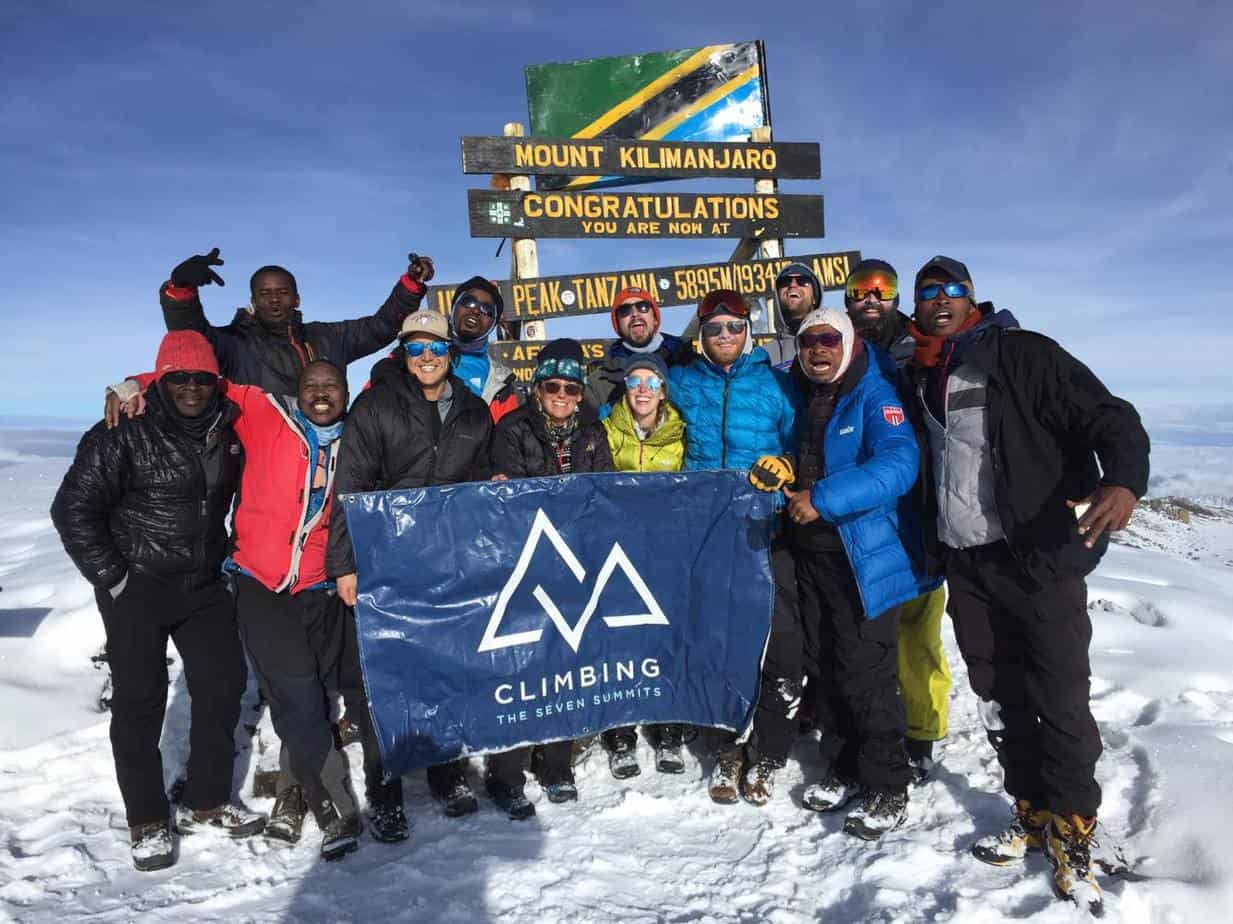
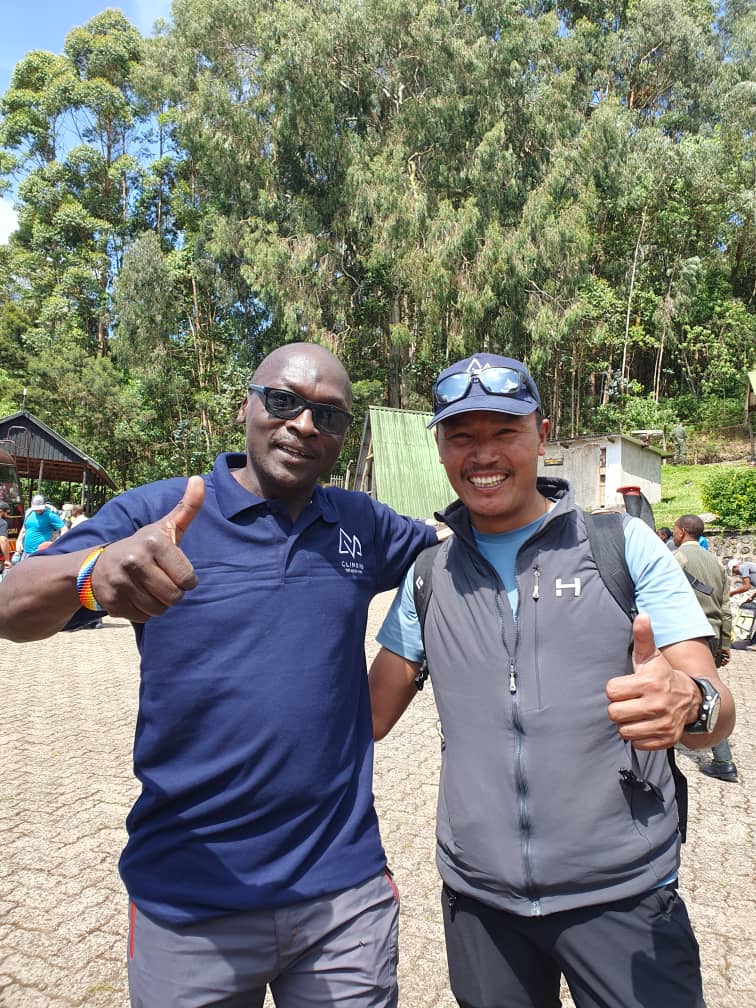
Guide Staff
Our annual Kilimanjaro team departure in December is an excellent example of how CTSS uses our status as a mountaineering guide service to deploy the best guides in the world. Last season, budding mountaineers were guided by world-renowned IFMGA guide Tendi Sherpa. Tendi is widely regarded as one of the most respected guides on Mount Everest and across the entire climbing community. He is also our most sought-after guide in the Himalayas booked years in advance for a summit on Everest. With countless summits on Everest, Manaslu, Cho Oyu, Lhotse, and beyond, he is a prime example of the caliber of guides we bring on our Kilimanjaro expeditions.
In December 2024, our team departure will once again be star-guided, this time by Pega Sherpa, who (much like Tendi) is one of the world’s best Everest and Himalayan guides. With thirteen 8000m expeditions under his belt, including nine Everest expeditions and countless 6000m and 7000m ascents, we are proud to offer up once again the rare opportunity to pick the brains of one of the world’s most sought-after private guides. As one of our clients (and a Seven Summits finisher) recently shared, “Pega is a LEGEND,” and we couldn’t agree more with their feedback.
Regardless of whether you have Himalayan aspirations, we do not doubt that all who climb with our star guides, like Pega and Tendi, will appreciate their skills, patience, and stories from the mountains.
Program Management Team
Whether you’re looking to tackle Kilimanjaro as part of your Seven Summits journey or a singular objective, you will benefit from the expertise of our dedicated Program Management team. From the moment you submit your first inquiry, you will be met with personalized advice and attention from our Program Managers. Unlike other trek operators, we don’t send automated emails about your expedition or push you from person to person within the company when you ask a question.
When you sign up to climb Kilimanjaro, our team offers personalized support to help you prepare and ensure you understand the route, the gear, the training regimen, and all the other logistics that come with flying to Tanzania for a nearly two-week expedition. In addition, as a holistic mountaineering guiding service, we are committed to retaining you as a happy climber. We work with mountaineers over a lifetime of climbing, and we get to know each individual throughout their progression. This means we are deeply invested not only in your safety and success but also in your goals, your learning, your journey, and your satisfaction. A Kilimanjaro-only trek operator only needs your business once, whether you summit or not, get altitude sick or not. It’s our goal that, once you climb with us, you’ll stick with CTSS expedition after expedition.
Our Program Managers look forward to helping you create a path that makes your climbing dreams come true. You won’t get a generalized plan for your mountaineering journey from our team. You get a custom-tailored plan designed for you, your budget, and your timeline, and we will always be ready to answer your questions and provide personalized support rather than become one of the countless faceless online booking platforms.
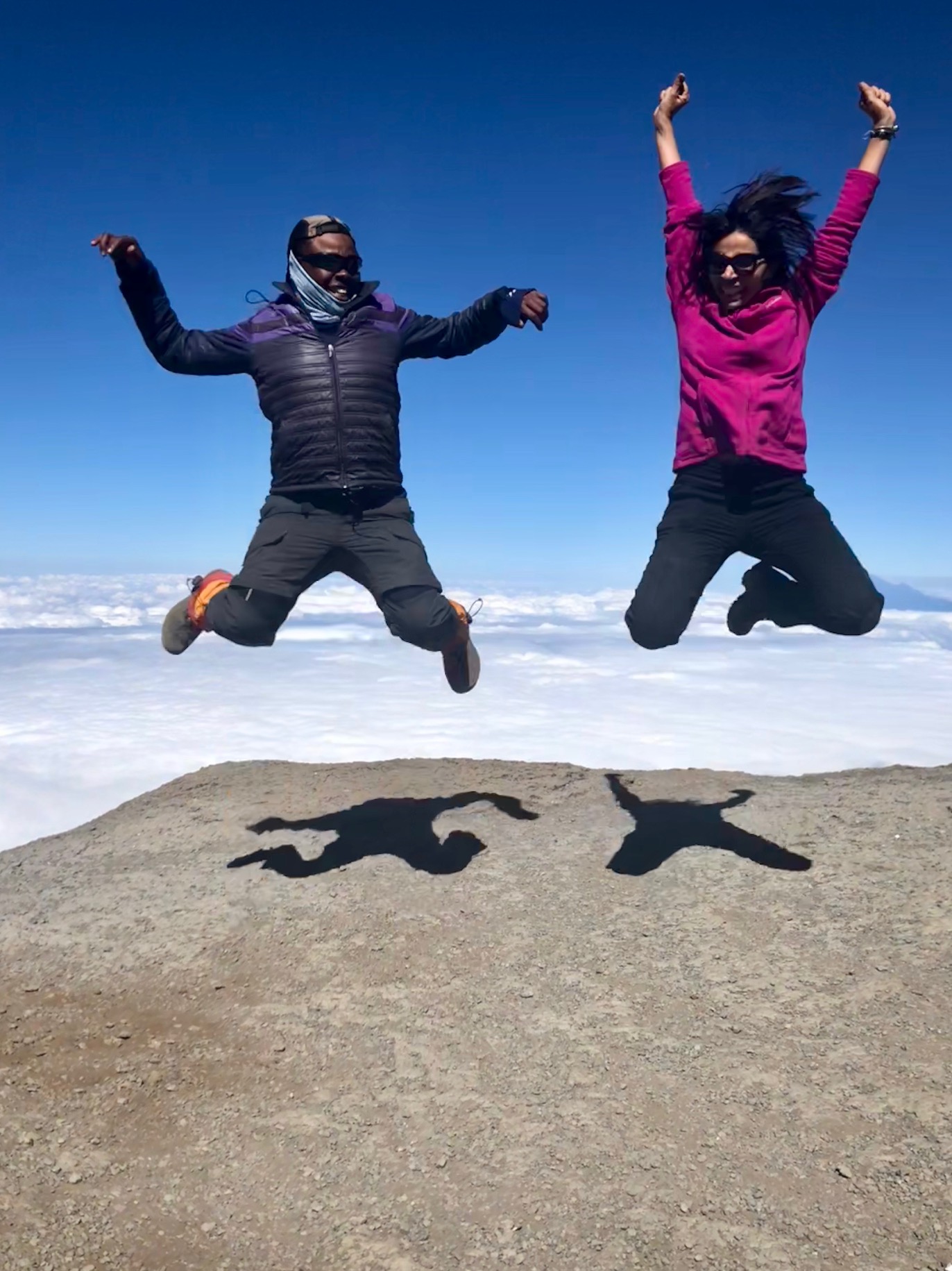
Kilimanjaro Porters Assistance Program
CTSS is a proud Kilimanjaro Porters Assistance Program (KPAP) member through the Partner for Responsible Travel Program, a legally registered non-profit supporting the fair and ethical treatment of Kilimanjaro porters, cooks, and mountain guides. We are fully committed to exceeding the expectations outlined by the organization and taking excellent care of our Tanzanian mountain crew.
In choosing us as your Kilimanjaro Responsible Trekking Organization (KRTO), you guarantee that you are doing the most to ensure your porters receive the treatment they deserve. We are monitored independently and objectively by KPAP, and we allow this organization to evaluate the treatment of our porters during all of our climbs. Outside of tracking KRTOs, KPAP also raises public awareness regarding the proper treatment of porters on Kilimanjaro and assists climbing companies with implementing procedures that ensure fair and ethical treatment of their porters.
As a KRTO-certified partner company, we can guarantee the following:
- Socially responsible Kilimanjaro mountain tourism
- Fair and ethical treatment of all mountain crews
- No exploitation and mistreatment of all mountain crews
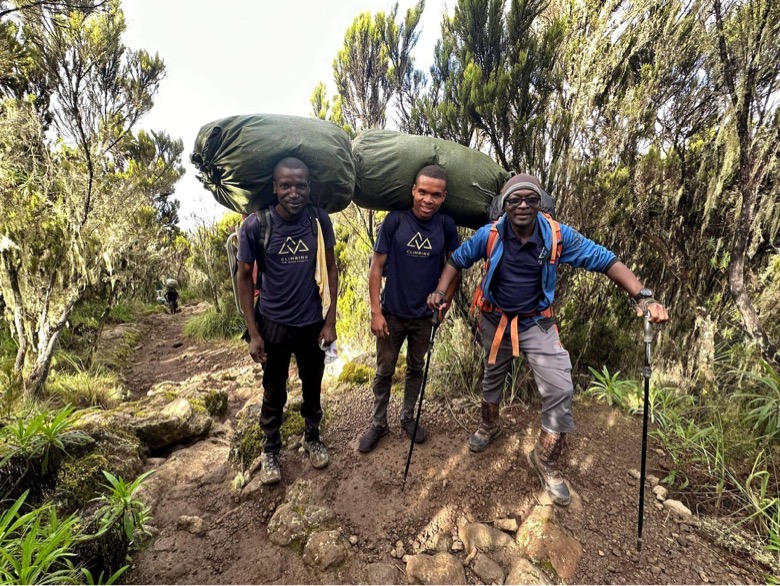
Check out our recent webinar—Mountaineering 101: Understanding Acclimatization & High-Altitude—to better our philosophy.
Acclimatization Schedule
Acute mountain sickness (AMS) is a common concern for trekkers, especially since Kilimanjaro is often a first foray into high-altitude environments and shouldn’t be underestimated. We favor the 7-day Machame Route, which allows for the best views and optimum acclimatization on the mountain, increasing your opportunity for success. We purposely keep a slow acclimatization schedule and climbing pace to allow you plenty of time to acclimatize naturally. Slow and steady wins the race.
Keeping a generous acclimatization schedule on Kilimanjaro is especially important for people under 25 years old who, while incredibly fit, have higher incidences of altitude sickness because they have less cranial space than their older counterparts. Because of caveats like this, we collaborate with some of the industry’s best experts in the field of acclimatization and spend time educating our clients to help them manage altitude safely.
Marginal Gains Philosophy
Our Marginal Gains Philosophy is simple: we capitalize on every little advantage. One percent here and one percent there quickly compounds into a huge overall improvement. People sometimes dismiss these little luxuries as soft, but we invest in them because they are highly strategic.
One of the most critical parts of mountaineering is eating well. Most climbers lose a huge amount of weight when climbing because altitude affects appetite and suppresses hunger. People just don’t “feel” like eating, the very thing they need to do given how much energy the body expends climbing, and even at rest, at altitude! On Kilimanjaro, we ensure your team has a dedicated cook team who prepare fresh, nutritious, and delicious meals that help fuel your body at altitude. No freeze-dried meals or cans of Spam in sight! Our goal is to help you keep your energy, strength, stamina, and happiness high throughout the expedition.
The list of marginal gains could go on and on—but what you need to know is that we’ve spent time engineering our expeditions to make you feel your best so you can focus on climbing at your best.
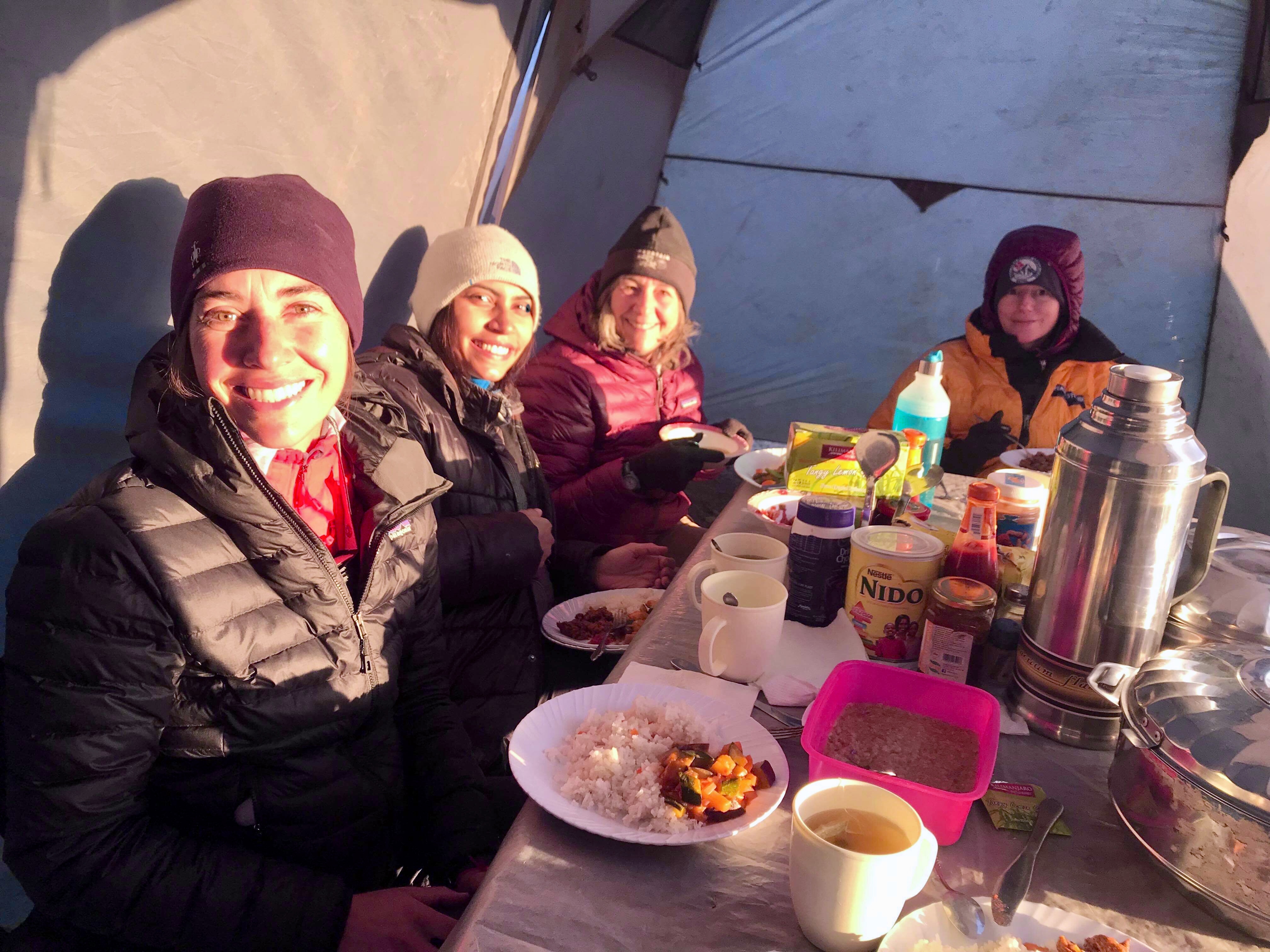
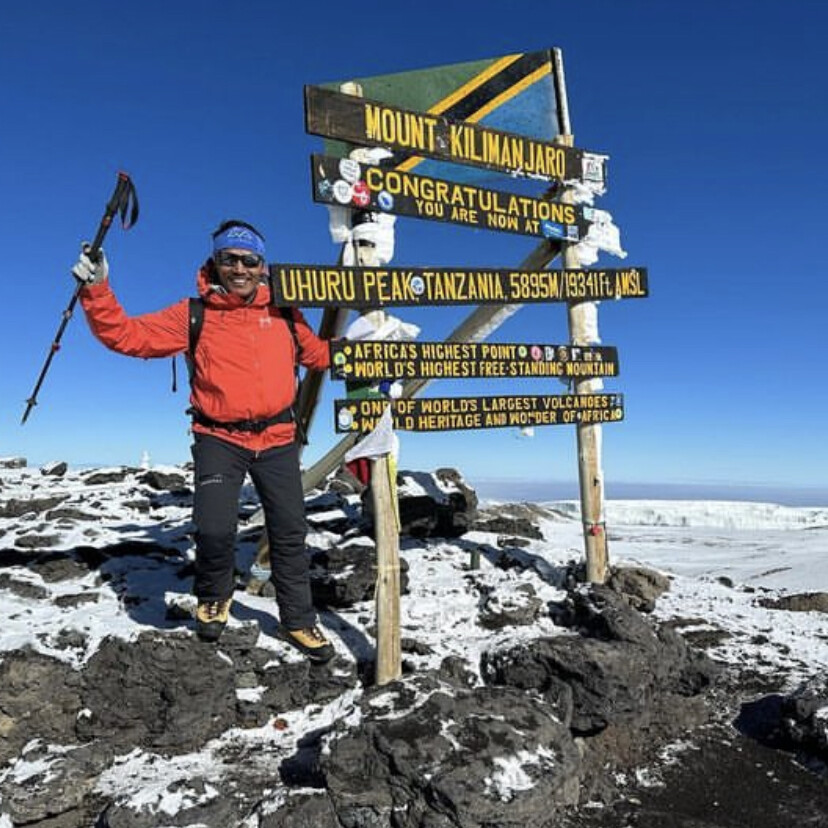
No D*ckheads Policy
We stand by our No D*ckheads Policy.
Successfully summiting the world’s mightiest peaks requires more than just physical fitness. It demands enormous mental strength, commitment, and, most importantly, deep humility. The “secret sauce” to a great expedition is the people you share it with. It can be the difference between success and failure. Most operators never bother getting to know their clients and will blindly accept anyone who pays the bill, whereas CTSS is selective of both our guide staff and our clients and holds everyone to the same high standards of behavior. Our culture is a huge part of what makes our expeditions so enjoyable, and we love climbing with like-minded people who are assets to their team.
We look for climbers who have humility and respect for the mountains, the environment, your guides, your teammates, and our shared priorities of safety and success (strictly in that order).
Signature Safari + Custom-Luxury Add-Ons
Our 3-day, 2-night signature African safari is a great way to celebrate your success on Mount Kilimanjaro and a perfect time for your friends and family to join you. We have put together a quick, celebratory safari after your climb that shows you the best of Tarangire National Park (renowned for its distinctive landscapes and the most abundant elephant population in Tanzania) and Ngorongoro Crater (a UNESCO World Heritage Site, often called Africa’s Eden), where you will experience some of the most spectacular wildlife and landscapes that Africa has to offer. No trip to Africa is complete without a safari!
If you have something else in mind, our team will plan a customized luxury itinerary that hits all your African-inspired bucket list items! Maybe it’s a hot air balloon ride over the Serengeti or getting up close (but not too personal) with the wild gorillas in Uganda. And don’t forget about our 3-day, 2-night Zanzibar getaway, a great way to unwind and relax in one of the most beautiful parts of the continent. With idyllic swimming beaches, turquoise waters, and beach bonfires by night, daily itineraries tend to be gloriously simple: sunbathe, swim, party, and repeat.
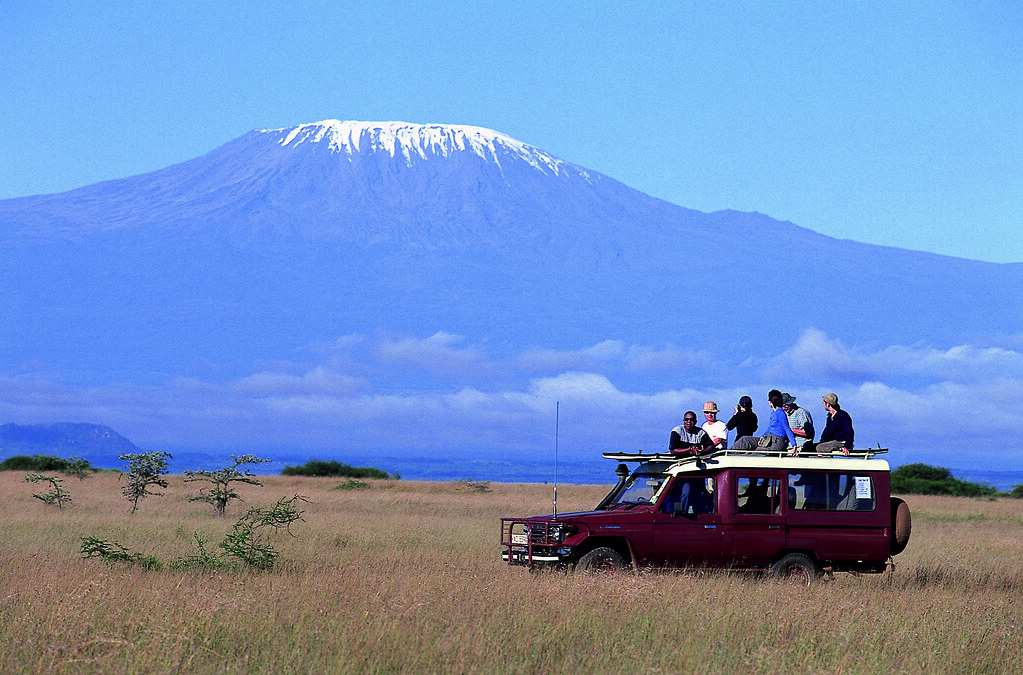
Final Thoughts on Kilimanjaro
Kilimanjaro is a fantastic climb for beginner and seasoned mountaineers alike because of its accessibility, stunning landscapes, cultural richness, and enjoyability. It offers a non-technical climb, meaning no prior climbing experience or hyper-specialized gear is required. This accessibility makes it an ideal choice for individuals new to high-altitude trekking and mountaineering who are eager to give it a go and take on a significant challenge. If you’re eyeing the Seven Summits or maybe just looking to get a taste of mountaineering, Kilimanjaro deserves a place on your tick list.
If you have any questions that remain unanswered, check out our Kilimanjaro website and drop us an email at info@climbingthesevensummits.com so our team can provide one-to-one support to make your climbing dreams a reality.
Manaslu Climbers Start High Camp Rotations
Here is a quick update from the field today from our Manaslu climbers! After a successful overnight at Camp One for our climbers, they've made it back to Base Camp to rest and recharge before continuing their acclimatization rotations.
The team will complete another rotation to Manaslu's Camp One, Camp Two, and Camp Three before one more staying a few more nights at Base Camp to round out their acclimatization schedule. After they finish their final rotation, hopefully by the weekend, they will rest before taking their summit bid.
Weather will be the biggest factor when it comes to making their summit bid, and lead guide Tendi Sherpa will keep a close eye on the conditions and identify the very best window for success. It's our goal that all expeditions are safe and successful, in that order, which is why we have guides like Tendi at the helm of many of our expeditions.
Manaslu photos from CTSS Archives. Photo Credit Tendi Sherpa
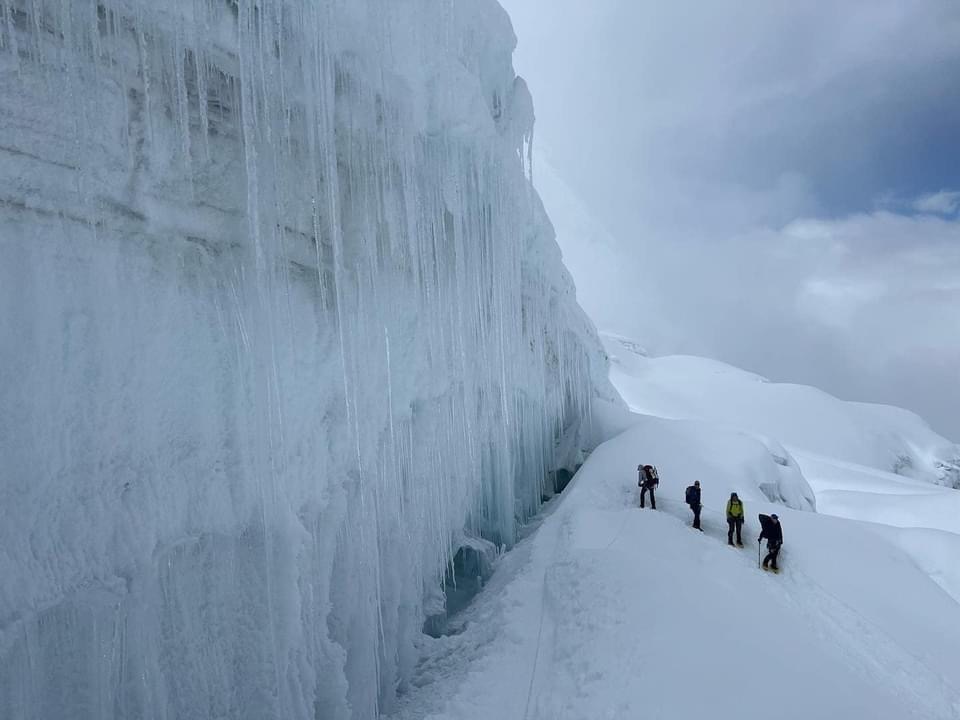
High Camp Rotations on Manaslu.
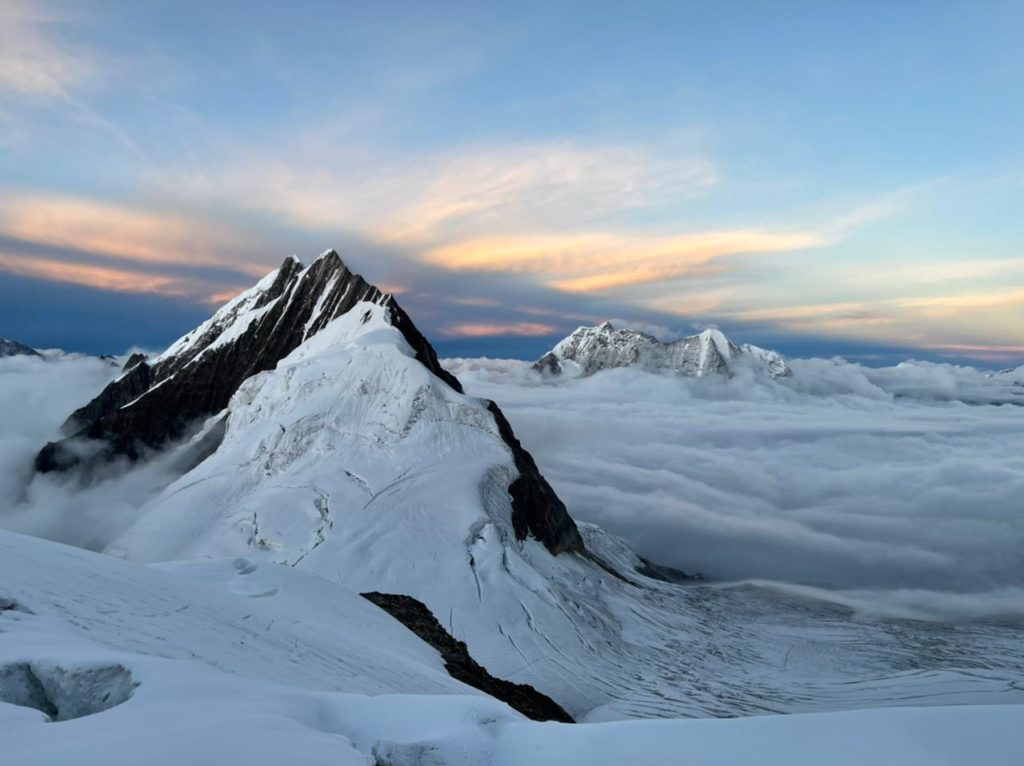
Manaslu looking beautiful at sunrise. This view is coming soon for our climbers!
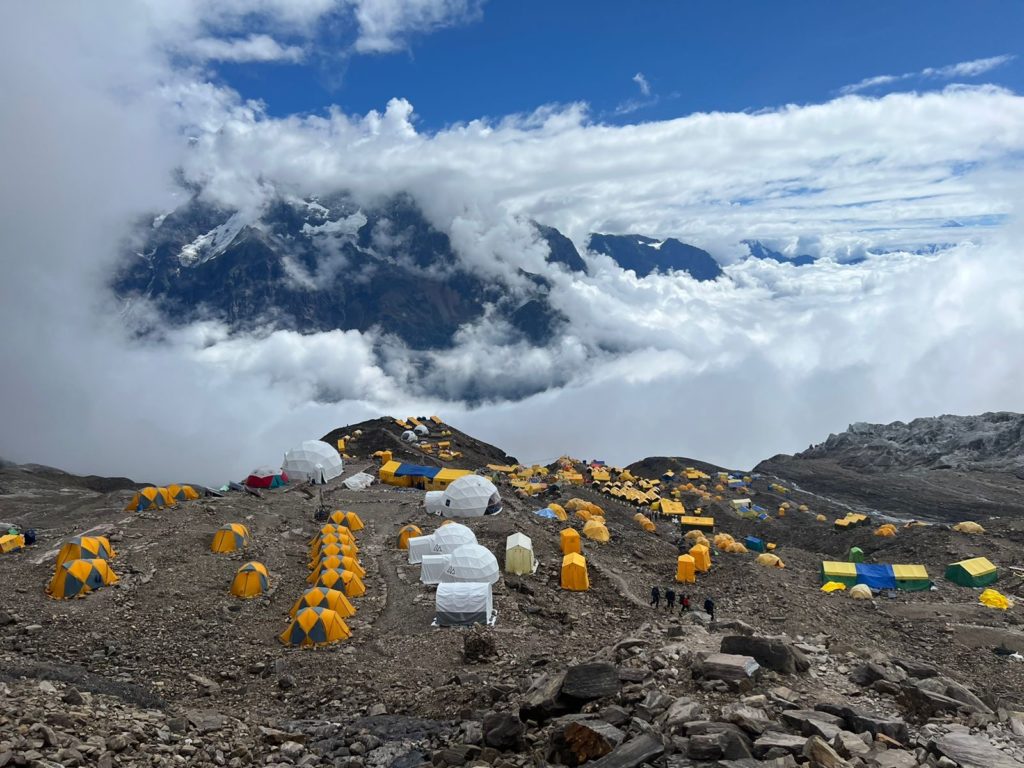
The prime location for CTSS Base Camp is Manaslu.
Acclimatization continues on Manaslu
Our team on Manaslu has been busy! After a week of acclimatization hikes in and around Samagau and Samdo, the team recentered this weekend with a traditional Tibetan Buddhist Puja blessing ceremony. Together, they raised prayer flags and paid their respect to the deity of Mount Manaslu.
This expedition has already been filled with team bonding, stunning views, and great weather, something we all hope continues as the team begins their high-mountain rotations. If all goes well weather-wise, the team should head to Camp One tomorrow before tagging Camp Two.
As CTSS lead guide Tendi Sherpa shared, "Acclimatization is essential to adapt to higher altitudes, allowing the body to adjust to lower oxygen levels, reducing risks of altitude sickness."
We are proud to employ slow acclimatization schedules on all of our treks and climbs. We want you to reach the summit as a happy and healthy climber, and we know proper acclimatization is crucial to making this happen.
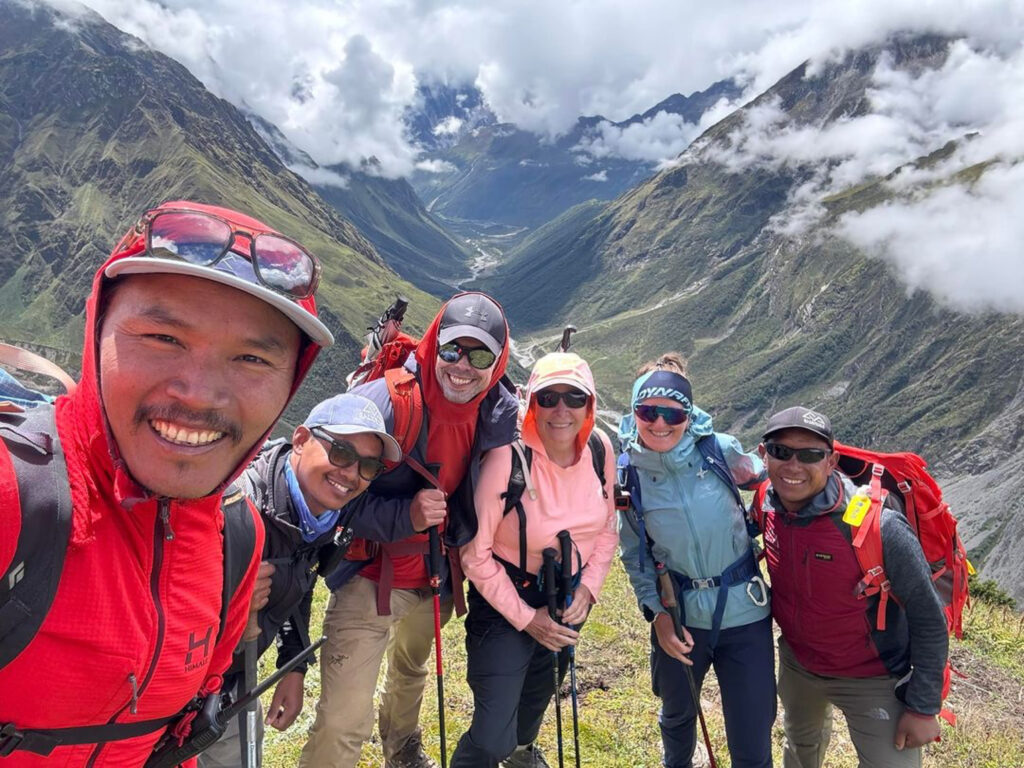 Slow acclimatization schedules on Manaslu make for happy climbers! (Photo: Tendi Sherpa)
Slow acclimatization schedules on Manaslu make for happy climbers! (Photo: Tendi Sherpa)
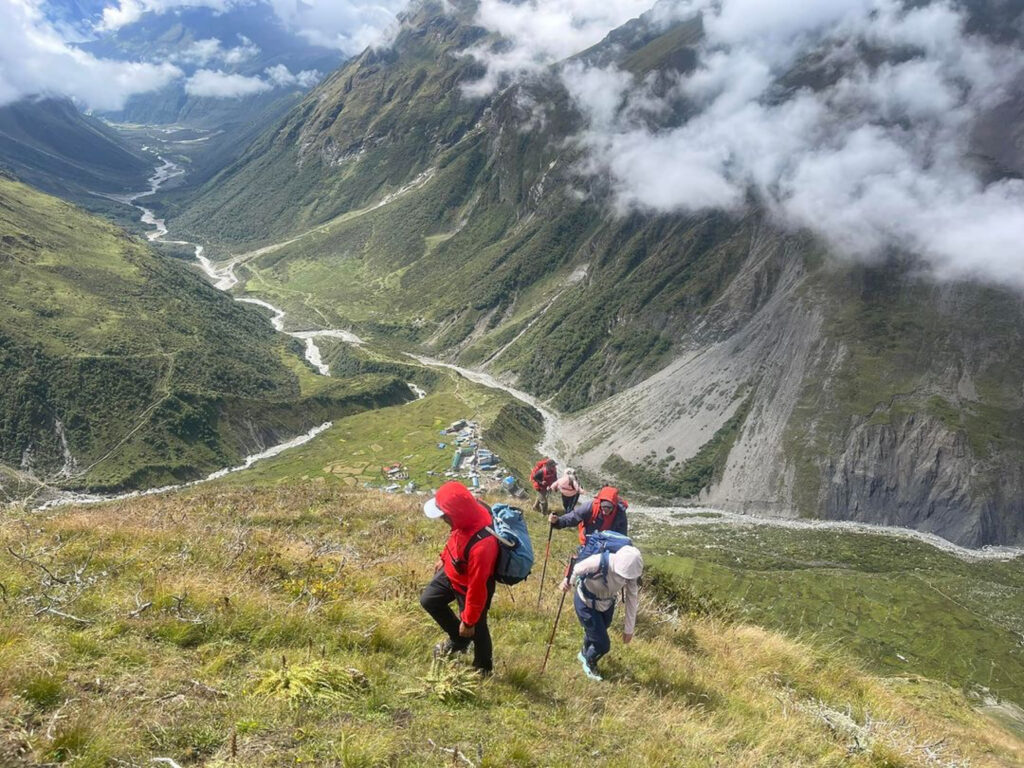 Climbing high above Samagau and Samdo. (Photo: Tendi Sherpa)
Climbing high above Samagau and Samdo. (Photo: Tendi Sherpa)
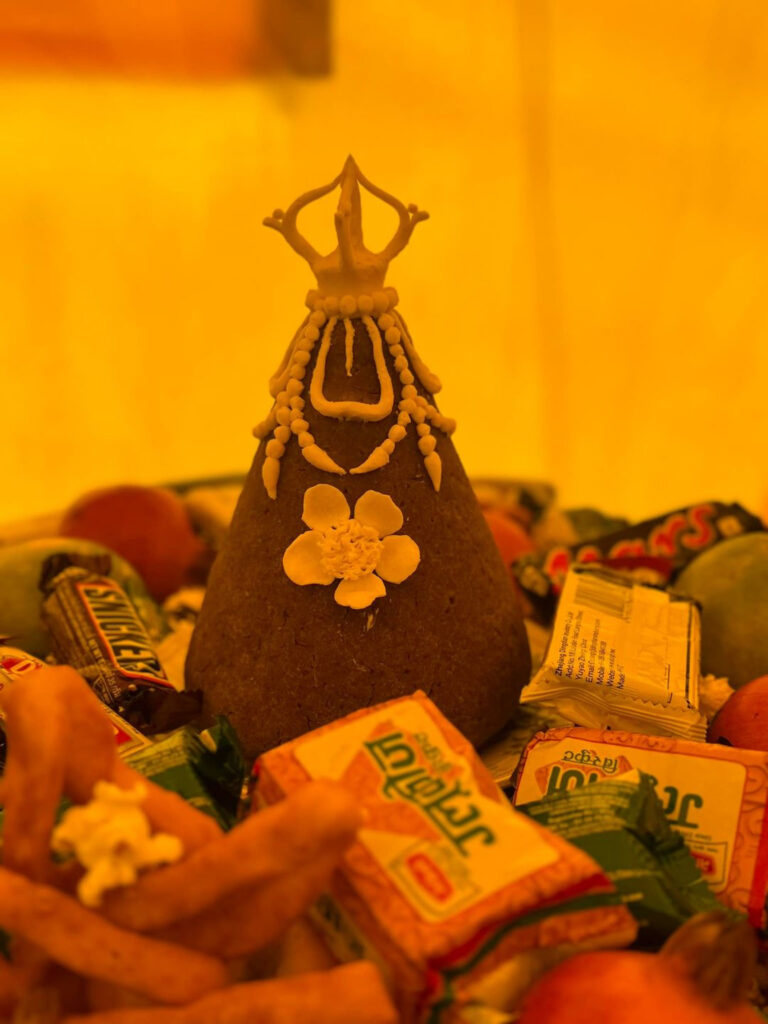 Puja blessing ceremony for our Manaslu climbers. (Photo: Tendi Sherpa)
Puja blessing ceremony for our Manaslu climbers. (Photo: Tendi Sherpa)
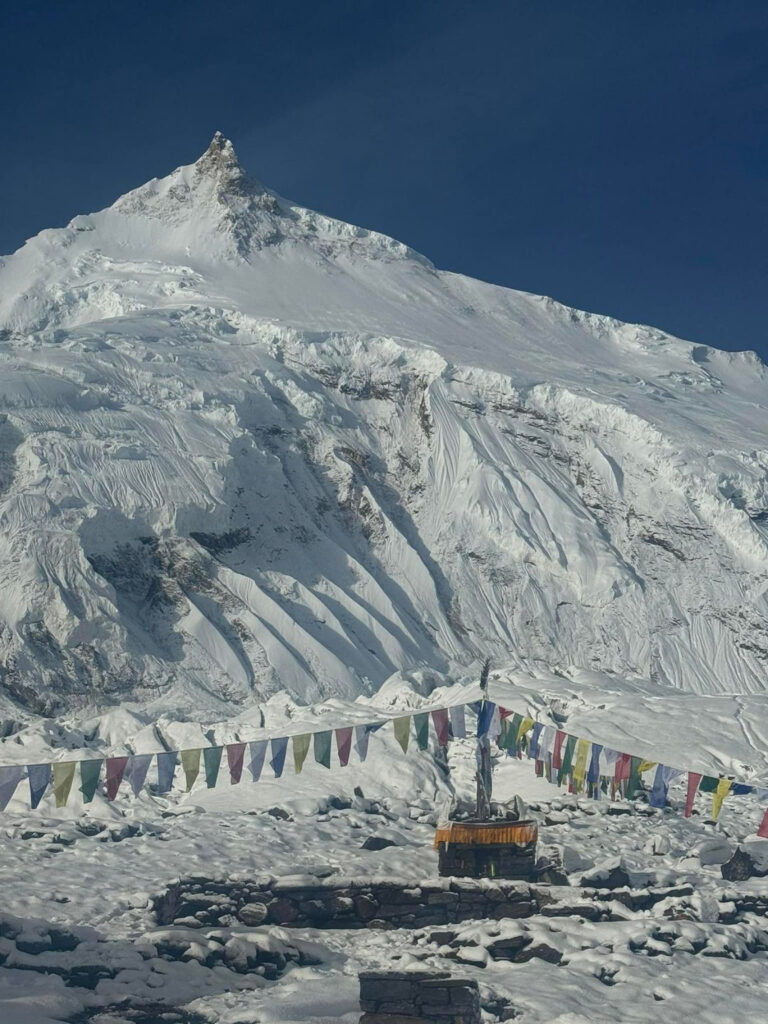 Moving on up! Manaslu Base Camp. (Photo: Tendi Sherpa)
Moving on up! Manaslu Base Camp. (Photo: Tendi Sherpa)
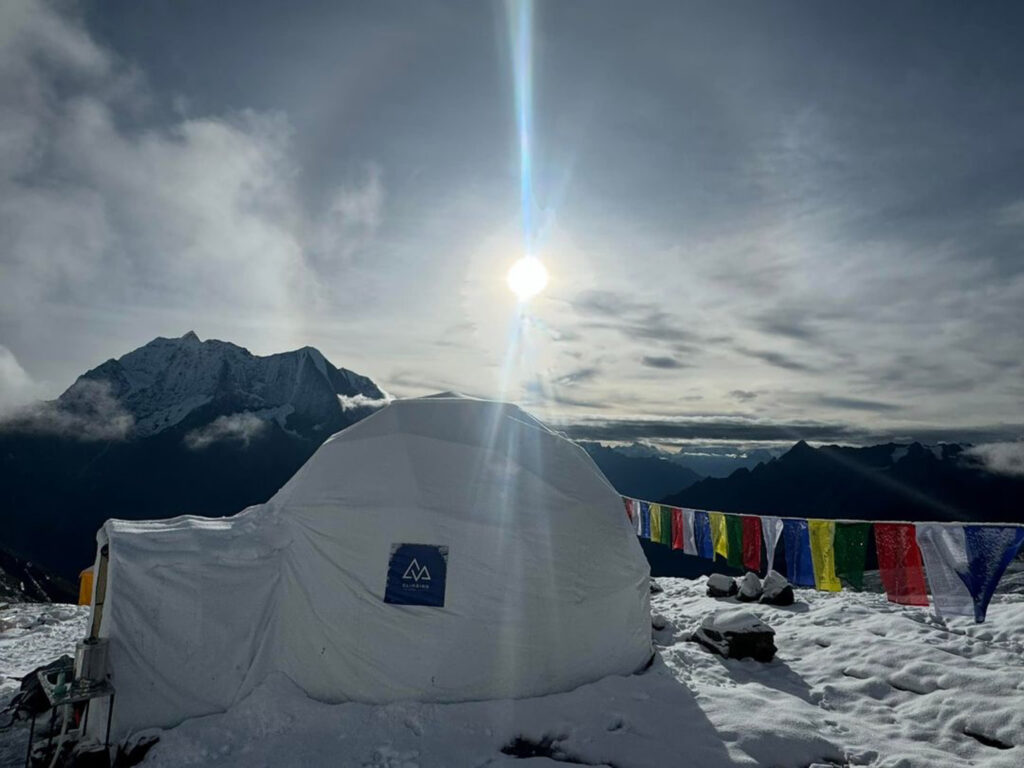 CTSS Base Camp on Manaslu looks good and is crucial to our Marginal Gains Philosophy! (Photo: Tendi Sherpa)
CTSS Base Camp on Manaslu looks good and is crucial to our Marginal Gains Philosophy! (Photo: Tendi Sherpa)
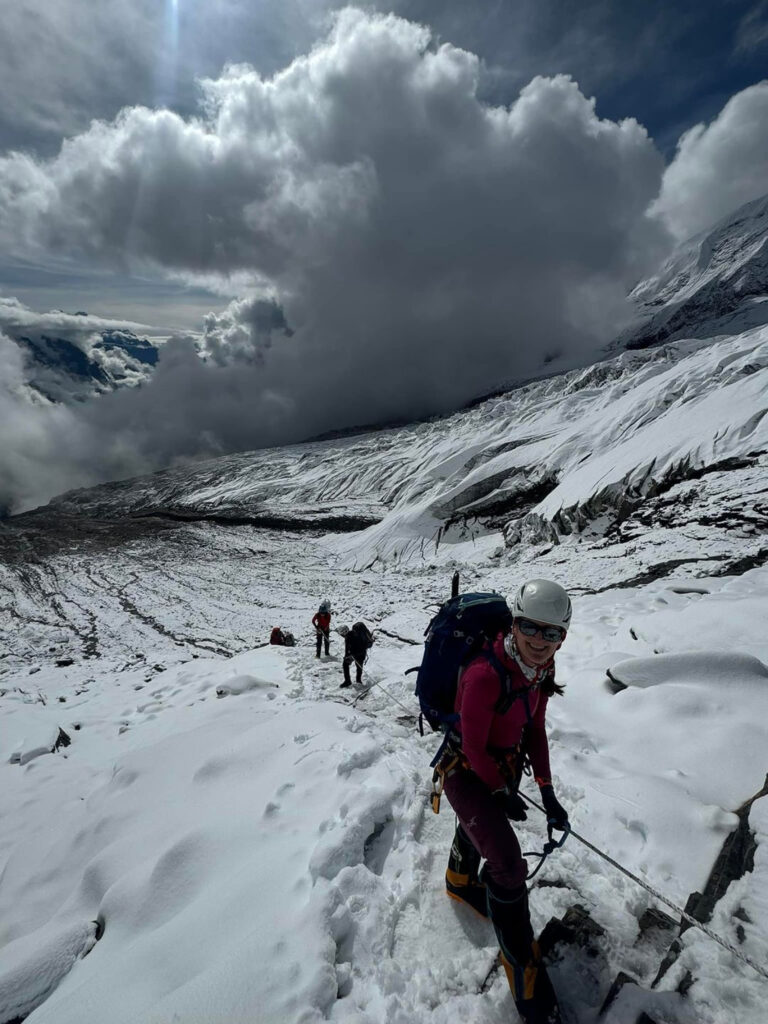 Keep an eye out on our blog as our Manaslu team climbers make their way to Camp One! (Photo: Tendi Sherpa)
Keep an eye out on our blog as our Manaslu team climbers make their way to Camp One! (Photo: Tendi Sherpa)
Manaslu Team has Arrived in Nepal!
Here we go! A new climbing season is upon us, which means our teams are headed back to Nepal to climb some of our favorite peaks. We are kicking things off with a team climb on Manaslu, followed by a 3 Peaks team climb where climbers will tick off Lobuche East (6,119m), Pokalde (5,806m), and Island Peak (6,160m). Our season will wrap with one of our specialty programs - First Ascent - where climbers will make a First Ascent in Nepal and climb a peak no one has ever climbed.
Tendi Sherpa is at the helm of our Manalu team climb and has been busy doing gear checks, briefings, and getting the team to Samagoan via helicopter. News from Tendi early this morning came in, and the team is staying active hiking and acclimatizing and will be moving to Base Camp soon. Once at Base Camp, the acclimatization will continue, and the team will join in on a Purja blessing ceremony, a Tibetan Buddhist ritual that is part of Sherpa life; the purpose is to ask the mountain deity for safe passage and, of course, to celebrate.
We will continue to post updates from the team as they make their way to Manaslu's Base Camp and beyond. Also, keep an eye on our Instagram feed for updates!
 Team Dinner in Kathmandu (Photo Credit: Tendi Sherpa)
Team Dinner in Kathmandu (Photo Credit: Tendi Sherpa)
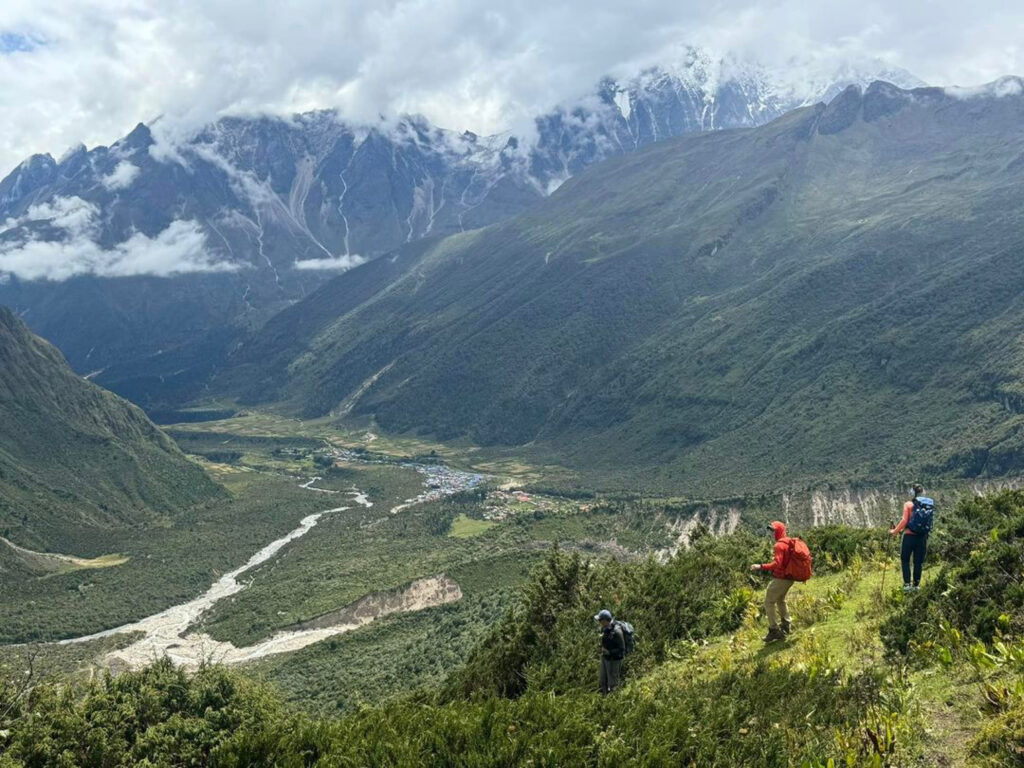 Acclimatizing above Samagoan (Photo Credit: Tendi Sherpa)
Acclimatizing above Samagoan (Photo Credit: Tendi Sherpa)
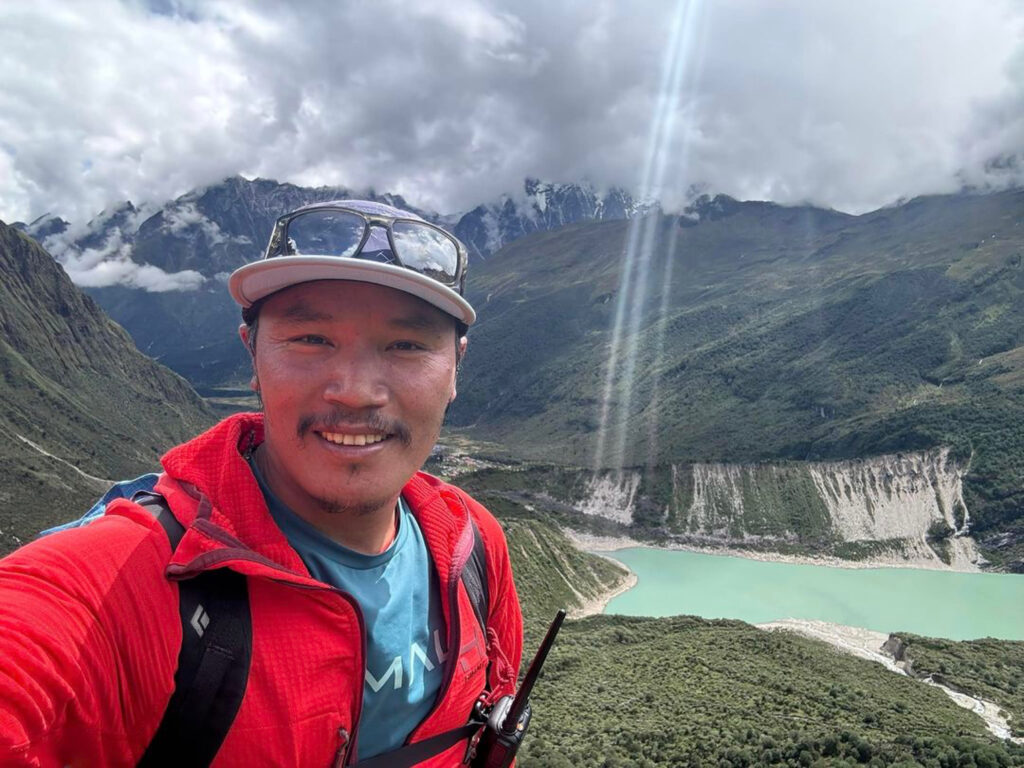 We are thankful for Tendi Sherpa's expert guidance and leadership on Manaslu this year.
We are thankful for Tendi Sherpa's expert guidance and leadership on Manaslu this year.
Guide Spotlight: Tomi Ceppi
Guide Spotlight: Tomi Ceppi
Say hello to CTSS Senior Guide, Tomás (Tomi) Ceppi! Born and raised in Patagonia, Argentina, Tomi started climbing mountains at an early age, beginning with ascents in Nahuel Huapi, Argentina’s oldest National Park. Since then, Tomi has continued to climb around the world and has completed an enormous number of rock climbing routes, backcountry ski descents, and mountaineering ascents, including Mount Everest and Lhotse, the latter without the use of supplemental oxygen.
Tomi is certified by the Provincial School for Mountain and Trekking Guides (EPGAMT) and is a member of the Argentinean Mountain Guides Association (AAGM). He also has his Wilderness First Aid (WFA) and Wilderness First Responder (WFR) certificate, as well as his AIARE Level I certification from The American Institute of Avalanche Research and Education.
Given the proximity of his childhood home to Aconcagua, Tomi has climbed the Stone Sentinel more than a few times and has extensive experience leading expeditions. Beyond Acooncagua, Tomi has climbed throughout South America, including the Central Andes, Patagonia, Chile, Peru, and Bolivia, as well as across the world. Notable summits include Island Peak (Nepal), Lobuche East (Nepal), Broad Peak (Pakistan), Vinson Massif (Antarctica), Denali (Alaska), Mount Kilimanjaro (Tanzania), Mount Elbrus (Russia), and throughout the Alps (Europe).
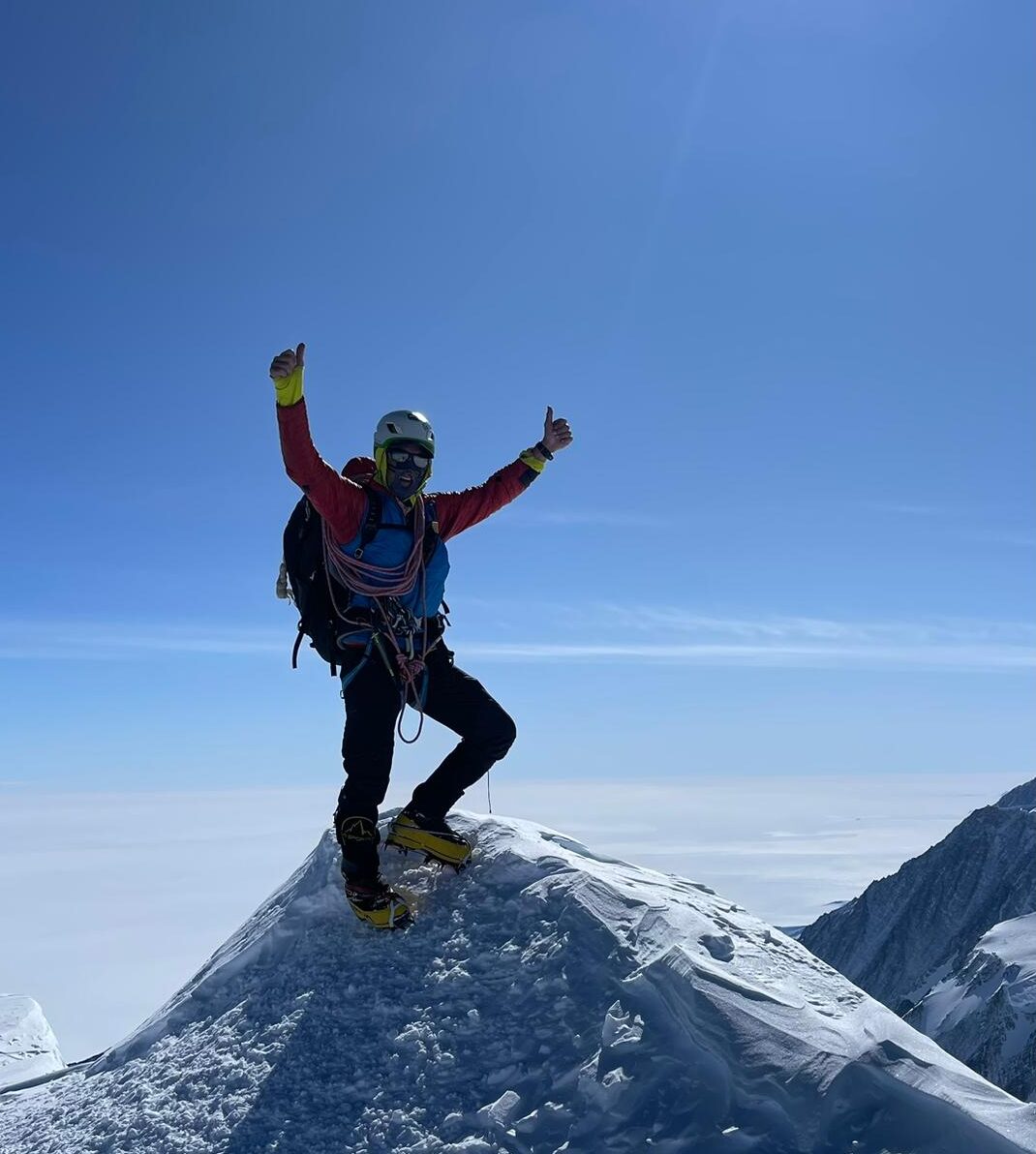
But Tomi has another skill up his sleeve outside of the climbing world. Tomi takes pride in his Argentinian roots and is often found at Everest Base Camp or Vinson Base Camp, whipping up a feast for his fellow climbers and guides. Just this year at Everest Base Camp, Tomi was spotted in the kitchen cooking incredible Argentinian fare, as well as pizza and chicken brochette skewers. If you are on one of Tomi’s expeditions, you can guarantee that you will be well-fed!
With a climbing resume like Tomi’s, we’re not surprised you’re eager to join him on the slopes of some of our favorite mountains. Below are a few upcoming expeditions where you can climb with Tomi or bump into him during your adventure. While he doesn’t guide every date listed below, he leads many of our team departures and is available to guide on a 1:1 basis. As a Senior Guide, Tomi has helped shape many of our expeditions, regardless if he is guiding them or not.
Climb with Tomi
Vinson Massif
We’re stoked to have Tomi as one of our lead guide for all of our 2025/2026 Vinson Massif team departures. Because when it comes to climbing to the tallest peak on the coldest continent in the world, you’ll want Tomi on your team! Also, don’t forget to check out our Vinson webinar co-hosted by Tomi.
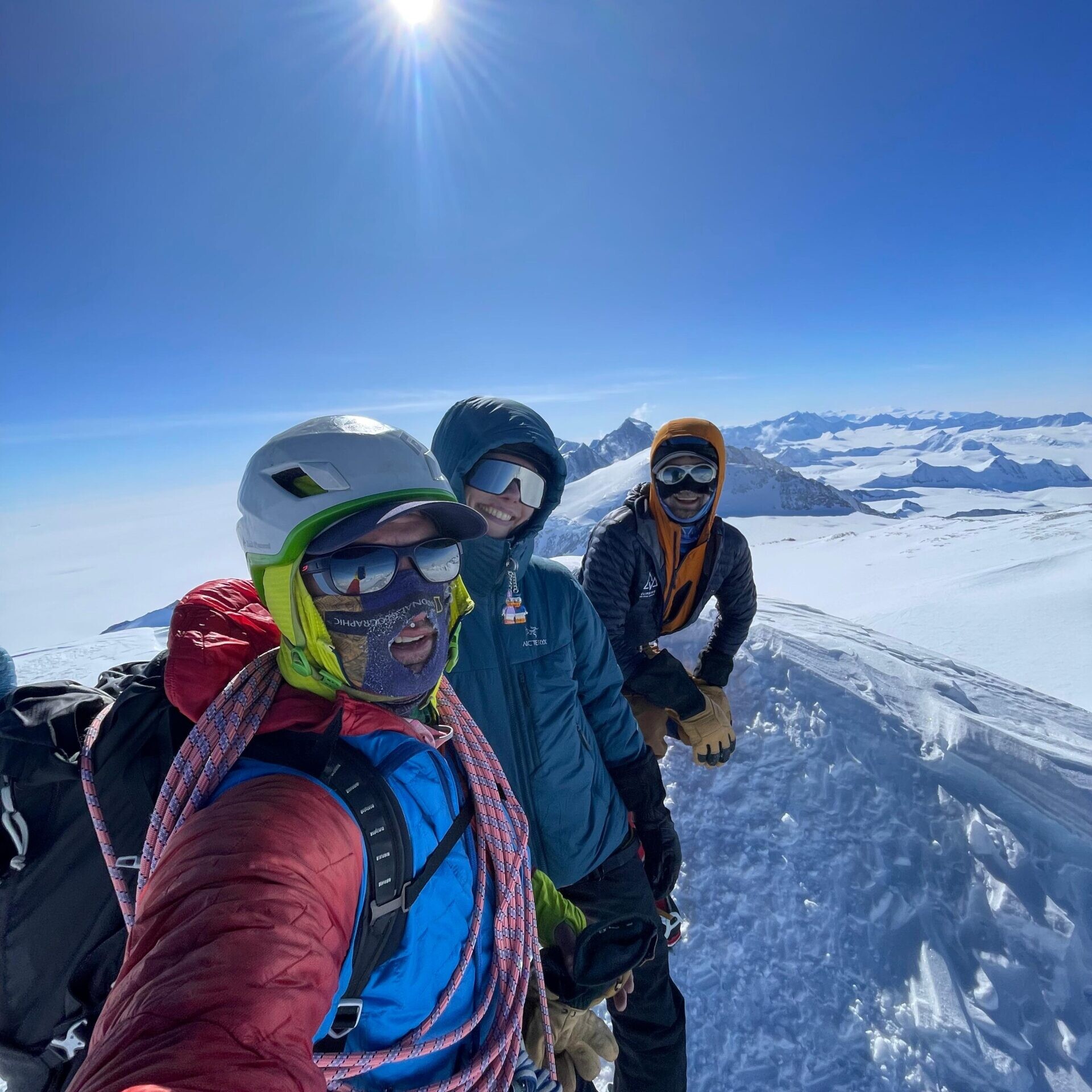
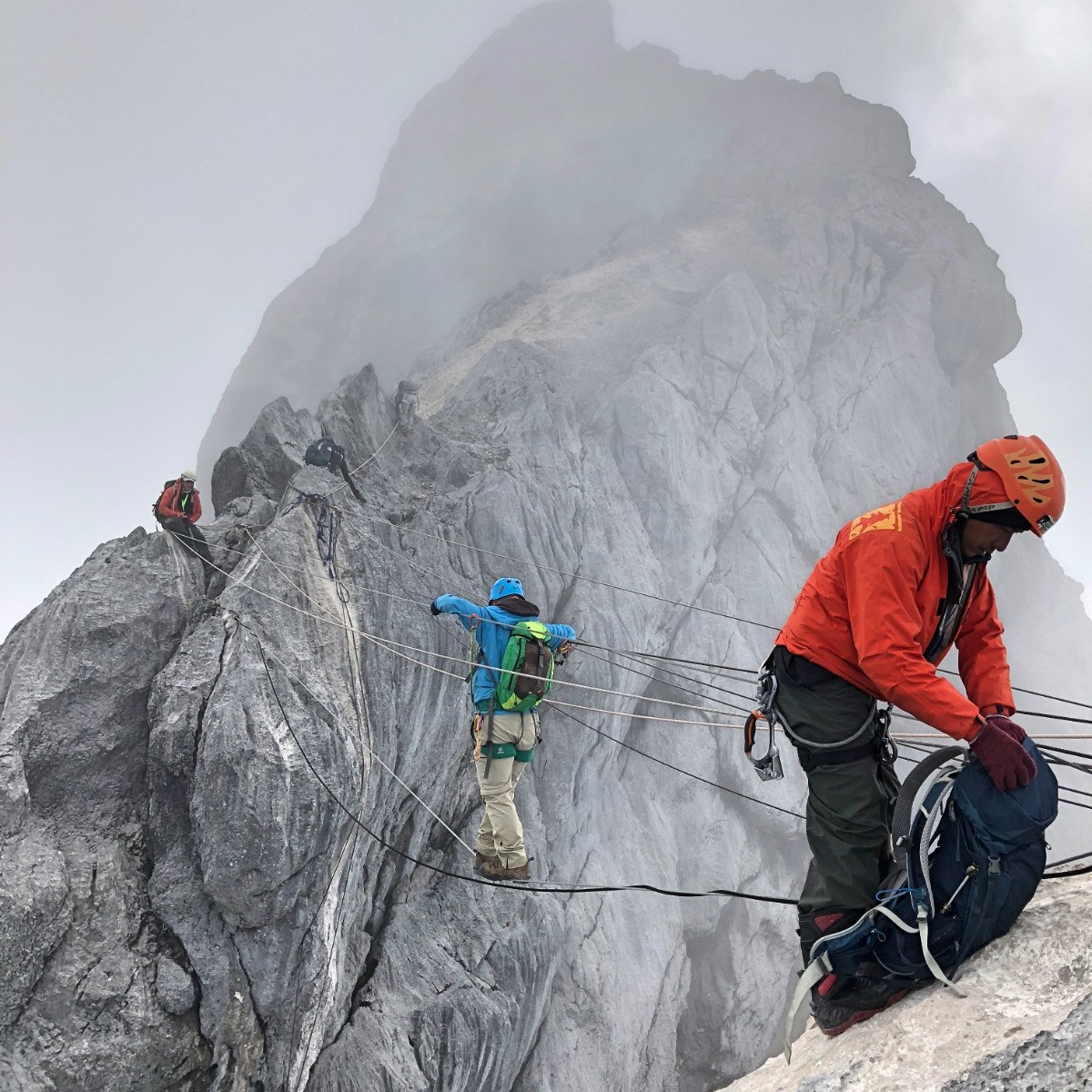
Carstensz Pyramid
Carstensz is back, and naturally, Senior Guide Tomi is up for the challenge of guiding one of the most remote and hard-to-reach of the Seven Summits. If you’re looking for a true adventure, world-class rock climbing, and the best guides in the world, join us.
Aconcagua
Climbing with Tomi in Argentina, his home country, is a once-in-a-lifetime opportunity. Tomi has been climbing in his “backyard” since he was a young boy, and he loves showing off South America’s tallest peak to fellow climbers. If you want to learn more about our Aconcagua program, register for our FREE webinar in October.
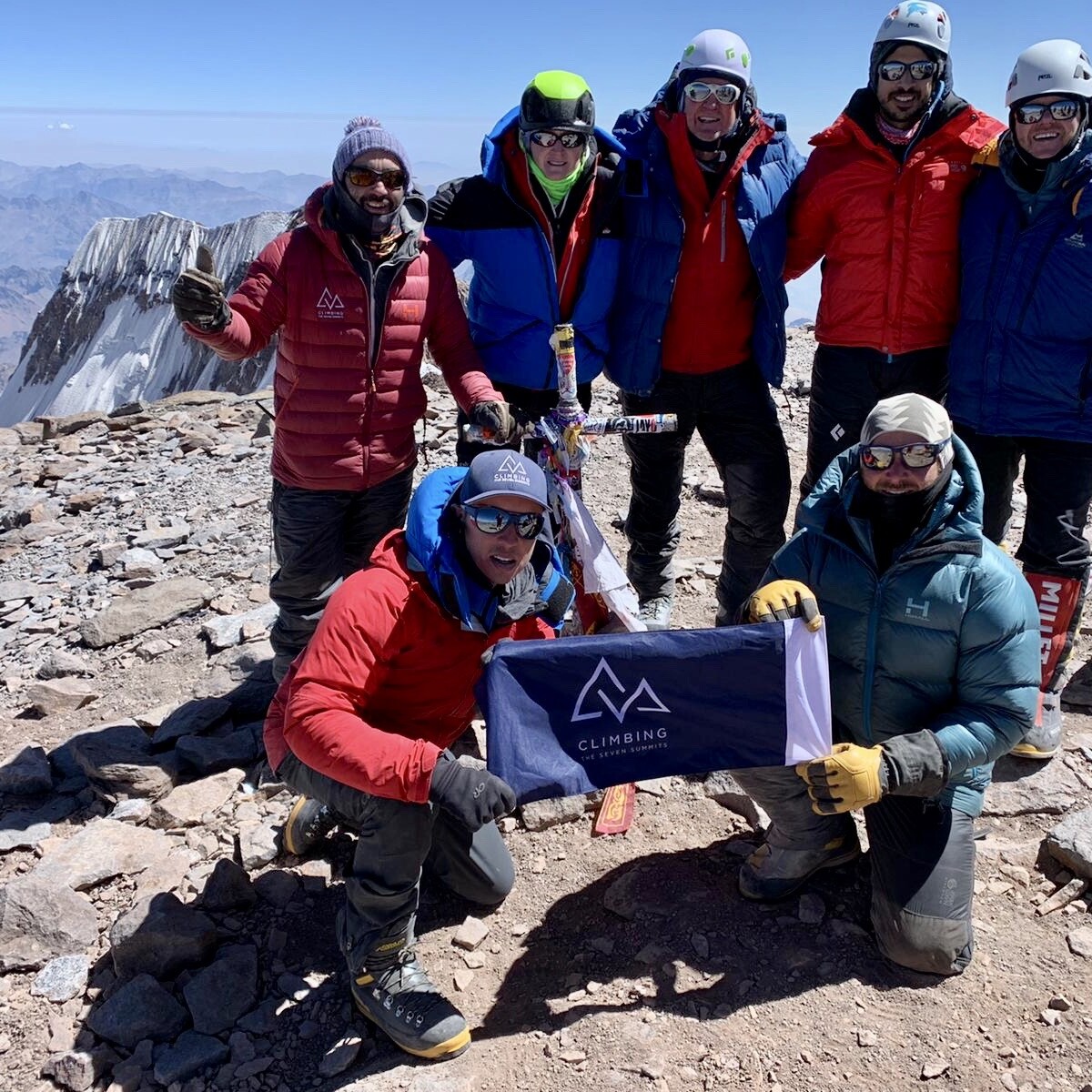
When you climb with Tomi you are undoubtedly getting one of the best guides in the world. But what’s more is who Tomi is as a person. He is kind and caring, an ace in the kitchen, and, of course, strong and technically solid in the backcountry. We are incredibly lucky to work with guides like Tomi to offer world-class climbs that center around climbing in good style.
The Seven Summits Series: Vinson Massif
Hosted by Mike Hamill and Tomi Ceppi
